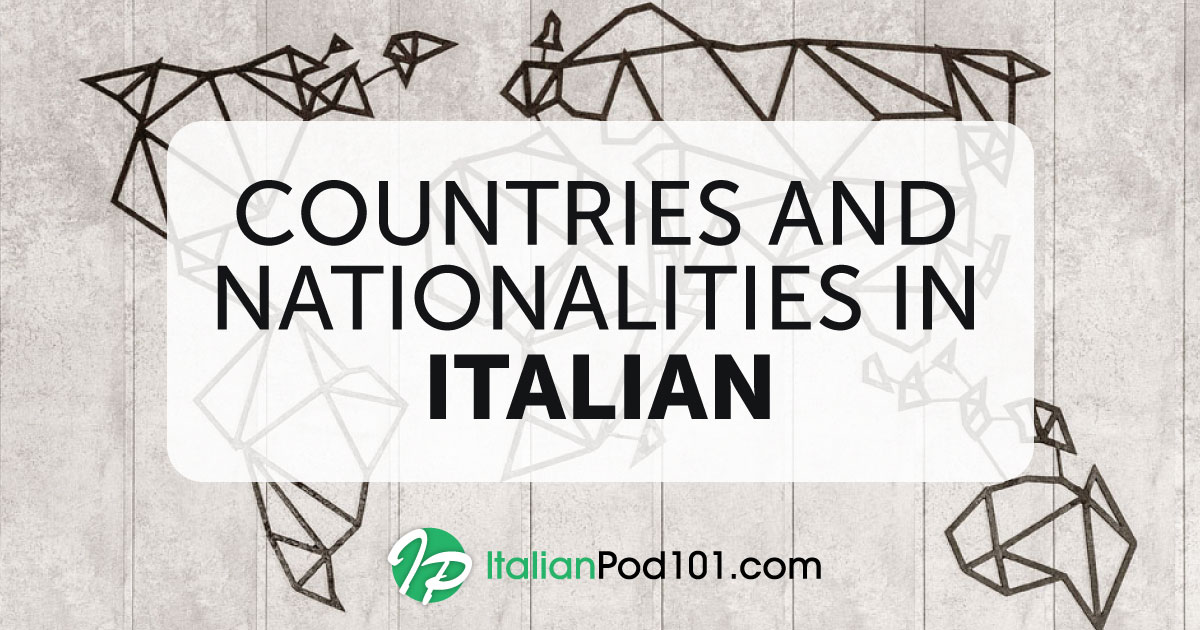
Time to study Italian animal words!
Why?
Animals are beautiful, animals are funny, and animals are useful. In addition, they are a common conversation topic (think of pets, documentaries, and films with animals in them). But do you really need a reason to study animal words in Italian?
Animal words are something that Italian children learn very early on when they first start speaking, and they’re equally essential for language learners to study—no matter their age. And, conveniently enough, many common animal names are similar across languages. Take, for example:
- Elephant
- Lion
- Tiger
- Giraffe
- Panda
- Koala
- Kangaroo
- Panther
- Gorilla
Do you want to give it a try and say the names of these animals in Italian? In any case, keep reading to find the answers!
In this article, you’ll learn the names of animals native to Italy as well as those found abroad. We’ll cover wild animals, farm animals, zoo animals, sea animals, bugs, birds, and even different types of pets. You’ll also discover fun expressions related to animals and the Italian terms for animal body parts. Ready?
 Table of Contents
Table of Contents
- Pets
- Farm Animals
- Wild Animals
- Marine Animals
- Bugs and Insects
- Birds
- Reptiles & Amphibians
- Animal Body Parts
- Animal Verbs
- Animal Sounds
- Animal-Related Idioms and Slang Expressions
- Conclusion
1. Pets
There are around 60 million pets in Italy today, equating to almost one pet per Italian! You could definitely say that Italians love their pets.
The most common pet choices here are dogs and cats (no surprise there), with Italians owning a total of seven million of each! Other popular pets among Italians of all ages are birds, fish, little mammals (hamsters and rabbits), as well as reptiles and spiders!

Best friends forever!
Pets are not only a source of companionship and stress relief for people, but they’re also good for the economy! It’s calculated that the pet industry moves more than two billion euros per year, and it’s a constantly growing business.
Here are the names of animals in Italian that are most often kept as pets:
| (Il) gatto | “Cat” |
| (Il) cane | “Dog” |
| (Il) criceto | “Hamster” |
| (Il) coniglio | “Rabbit” |
| (Il) canarino | “Canary” |
| (Il) porcellino d’India | “Guinea pig” |
| (Il) pesce rosso | “Goldfish” |
→ Check out our big list of animal names, and practice your pronunciation with the help of recordings from native speakers.
2. Farm Animals
Before fashion, art, and sports cars, Italy was mainly an agricultural economy. As such, farm animals have always played a central role in the lives and culture of Italians. Take a local train out of any Italian city, and you’ll be able to spot beautiful and happy farm animals scattered throughout the Italian landscape.

Sono un porcellino. (“I’m a piglet.”)
Granted, they may not be happy all the time, given the general conditions of intensive farming. But numbers do show that the consumption of meat in Italy has decreased over the last decade, especially when it comes to red meat (for health issues) and meat from horses, rabbits, and lambs (due to a growing sensitivity toward these species).
Some breeding animals are more important than others, since they’re vital in the creation of some of the most widely known Italian culinary products: mozzarella di bufala (“buffalo mozzarella”), prosciutto di Parma (made from select pigs), and formaggio pecorino (“sheep milk cheese”).
Here are the names of common farm animals in Italian:
| (La) mucca | “Cow” |
| (Il) cavallo | “Horse” |
| (L’)asino | “Donkey” |
| (Il) mulo | “Mule” |
| (La) pecora | “Sheep” |
| (La) capra | “Goat” |
| (La) gallina | “Hen” |
| (Il) gallo | “Rooster” |
| (Il) tacchino | “Turkey” |
| (Il) maiale | “Pig” |
3. Wild Animals
Italy has the highest biodiversity of any country in Europe, with over 57,000 different animal species (or more than a third of all European fauna).
This is due to various factors.
The Italian Peninsula is at the center of the Mediterranean Sea, forming a corridor between Central Europe and North Africa; its coastline is 8,000 kilometers (≈ 4971 miles) long. Animals also tend to arrive in Italy from the Balkans and the Middle East. And finally, the geological structure of Italy is quite varied and its climate differs from North to South. All of this contributes to creating a great habitat diversity.
As a result, Italy is home to many beautiful wild land animals, mostly in the woods and in the mountains. In the recent past, many of these animals were in danger of extinction from Italian territory, mostly due to hunting and the loss of their natural habitat. But lately, thanks to protection laws and information campaigns, they’re starting to increase in number.
Keep reading to discover the names of several different wild animals in Italian!

A happy family
| (L’)orso | “Bear” |
| (Il) lupo | “Wolf” |
| (Il) cervo | “Deer” |
| (Lo) stambecco | “Steinbock” (Alpine wild goat) |
| (La) volpe | “Fox” |
| (La) lepre | “Hare” |
| (Il) cinghiale | “Wild boar” |
| (Lo) scoiattolo | “Squirrel” |
| (La) vipera | “Viper” |
If these aren’t enough, you might want to spend a day in a zoo (check out one of the oldest and largest zoos in Europe, Roma’s Bioparco). Here are the names of wild animals you’ll find there:
| (Il) leone | “Lion” |
| (La) tigre | “Tiger” |
| (La) giraffa | “Giraffe” |
| (L’)ippopotamo | “Hippopotamus” |
| (Il) rinoceronte | “Rhino” |
| (Il) gorilla | “Gorilla” |
| (L’)elefante | “Elephant” |
| (Il) canguro | “Kangaroo” |
| (Il) panda | “Panda” |
| (Il) koala | “Koala” |
| (La) pantera | “Panther” |
| (La) scimmia | “Monkey” |
| (Il) bradipo | “Sloth” |
| (Il) pinguino | “Penguin” |
| (L’)orso polare | “Polar bear” |
| (La) foca | “Seal” |
4. Marine Animals
Italy is a peninsula surrounded by the beautiful Mediterranean Sea, and Italians have always been exploring its waters for adventure and fishing. So, we love fish…and the beach, too!
There are many common species of fish in the Mediterranean, especially of the type pesce azzurro (“oily fish”). These include tonno (“tuna”), sgombro (“mackerel”), pesce spada (“swordfish”), and sardina (“sardine”). We also have plenty of seafood, like ricci (“sea urchins”), vongole (“clams”), and cozze (“mussels”).
Below, you’ll find the names of the most common sea animals in Italian. But if you want to see and practice the names of larger or more exotic aquatic species, you should go to the fantastic Aquarium of Genova.
| (Il) pesce | “Fish” |
| (Lo) squalo | “Shark” |
| (Il) delfino | “Dolphin” |
| (La) balena | “Whale” |
| (Il) leone marino | “Sealion” |
| (La) medusa | “Jellyfish” |
| (Il) cavalluccio marino | “Seahorse” |
| (Il) riccio | “Urchin” |
| (La) stella di mare | “Starfish” |
| (La) cozza | “Mussel” |
| (Il) polipo | “Octopus” |
→ Do you want to take a plunge with more marine animals and fish? Check out our fun vocabulary list!
5. Bugs and Insects
In the countryside, in the cities…the planet is full of insects. And maybe one day they will indeed inherit the world! Until then, let’s review the most common insects and other creepy-crawlies (hoping that no one here suffers from insectophobia!).

Don’t you like me?
But, on the other hand, if you’re among those who think that insects and bugs will be the food of the future, be advised that Italian law still prohibits the commercialization of edible bugs and derivatives (such as bug flour). So, if you have that particular craving, the only solution would be online stores.
Anyway, on with the list…
| (La) mosca | “Fly” |
| (Il) moscerino | “Gnat” |
| (La) zanzara | “Mosquito” |
| (Lo) scarafaggio | “Cockroach” |
| (La) formica | “Ant” |
| (La) farfalla | “Butterfly” |
| (La) libellula | “Dragonfly” |
| (L’)ape | “Bee” |
| (La) vespa | “Wasp” |
| (Il) ragno | “Spider” |
| (Il) grillo | “Cricket” |
| (La) coccinella | “Ladybug” |
6. Birds
In Italy, there are more than 500 species of birds. Half of these are nesting birds, while the other half are just passing by.
Birds have traditionally been a favorite target of hunters, and for this reason, they’re in great need of protection by organizations such as the Lega Italiana Protezione Uccelli – LIPU (“Italian Bird Protection League”). They do a great job at protecting birds, defending nature, and promoting knowledge of and respect for the environment.
| (La) colomba | “Dove” |
| (Il) piccione | “Pigeon” |
| (Il) passero | “Sparrow” |
| (Il) corvo | “Crow” |
| (Il) gabbiano | “Seagull” |
| (Il) falco | “Hawk” |
| (L’)aquila | “Eagle” |
| (La) civetta | “Owl” |
| (Il) pavone | “Peacock” |
7. Reptiles & Amphibians
You might never expect to see exotic or dangerous reptiles while traveling through Italy, but there are many varieties of lizards, turtles, and even a few poisonous vipers, so… Attenti dove mettete i piedi! (“Watch your step!”)
If you want to learn more about what to look for and what to avoid, i Carabinieri has published an exhaustive page on the topic.
| (La) rana | “Frog” |
| (Il) rospo | “Toad” |
| (La) tartaruga | “Turtle” |
| (Il) serpente | “Snake” |
| (La) lucertola | “Lizard” |
| (La) salamandra | “Salamander” |
| (L’)iguana | “Iguana” |
| (Il) coccodrillo | “Crocodile” |
8. Animal Body Parts
Even if we all evolved from the same little amphibians millions of years ago, we have different names for the body parts of humans and animals. And you’d better avoid mixing them up!
Learning the following words will help a lot when it comes to describing animals in Italian.
| (Il) muso | “Muzzle” |
| (Il) becco | “Beak” |
| (La) zampa | “Paw” |
| (La) coda | “Tail” |
| (Le) corna | “Horns” |
| (Il) pelo | “Hair” |
| (La) pelliccia | “Fur” |
| (Le) zanne | “Fangs” |
| (Gli) artigli | “Claws” |
| (Lo) zoccolo | “Hoof” |
| (La) penna | “Feather” |
| (La) piuma | “Plume” |
| (La) criniera | “Mane” |
| (La) proboscide | “Trunk” |
| (Il) tentacolo | “Tentacle” |
| (L’)antenna | “Antenna” |
| (Le) pinne | “Fins” |
| (Le) scaglie | “Scales” |
| (La) cresta | “Comb” |
→ Are you getting confused between human and animal body parts? Here’s a link to freshen up your “human” vocabulary.
9. Animal Verbs
Are you having fun yet? We thought so.
To complement your knowledge of animal names and body parts, let’s go over a few essential verbs you’ll need to talk about animal-related actions.

In Italian, I go Muuuuu.
| Miagolare | “To meow” |
| Abbaiare | “To bark” |
| Ruggire | “To roar” |
| Ronzare | “To buzz” |
| Ringhiare | “To growl” |
| Fare le fusa | “To purr” |
| Cinguettare | “To chirp” |
| Muggire | “To moo” |
| Galoppare | “To gallop” |
| Nuotare | “To swim” |
| Strisciare | “To crawl” |
| Azzannare | “To bite (with teeth)” |
| Beccare | “To peck” |
| Graffiare | “To scratch” |
| Leccare | “To lick” |
| Accarezzare | “To pet” |
| Addestrare | “To tame” / “To train” |
| Allevare | “To breed” |
| Accoppiare | “To mate” |
10. Animal Sounds
Animals do not emit generic noises, but calls that have very precise names. Some of these onomatopoeia are commonly used, while others are less well-known. After learning the sounds animals make in Italian, try to see which ones you’re able to imitate!
| Animal | Sound | Verb |
| cane (“dog”) | bau bau | abbaia (“it barks”) |
| gatto (“cat”) | miao | miagola (“it meows”) |
| asino (“donkey”) | Iho iho | raglia (“it brays”) |
| cavallo (“horse”) | iiih | nitrisce (“it neighs”) |
| elefante (“elephant”) | iiiih | barrisce (“it trumpets”) |
| gallo (“cock”) | chicchirichì | canta (“it sings”) |
| zanzara (“mosquito”) | zzzzzzz | ronza (“it buzzes”) |
| corvo (“crow”) | cra cra | gracchia (“it croaks”) |
| topo (“mouse”) | squit squit | squittisce (“it squeaks”) |
| serpente (“snake”) | sssssss | sibila (“it hisses”) |
| rana (“frog”) | cra cra | gracida (“it croaks”) |
| pulcino (“chick”) | pio pio | pigola (“it peeps”) |
| piccione (“pigeon”) | gru gru | tuba (“it coos”) |
| pecora (“sheep”) | beeeee | bela (“it bleats”) |
| passero (“sparrow”) | cip cip | cinguetta (“it chirps”) |
| mucca (“cow”) | muuuuu | muggisce (“it bellows”) |
| maiale (“pig”) | oink oink | grugnisce (“it grunts”) |
| lupo (“wolf”) | auuuuhhh | ulula (“it howls”) |
| grillo (“cricket”) | cri cri | frinisce (“it chirps”) |
And the crocodile…? What does the crocodile say? Nobody knows. But if you want to have a little fun, here’s one of the most famous Italian children’s songs, named Il coccodrillo come fa? (“How Does the Crocodile Go?”)
11. Animal-Related Idioms and Slang Expressions
Animals are an integral part of our daily lives, so much so that we find them in many common proverbs, expressions, and idioms in the Italian language.
We often use expressions where animals are associated with personal qualities in order to highlight these qualities more effectively, or to metaphorically represent some characteristics or traits of people.
Expressions with animals are so numerous and so pervasive that it would be impossible to make an exhaustive list. But here are the most common ones. What can I say? In bocca al lupo! (You’ll need to get to the end to know what that means…) 😉

In bocca al lupo – Viva il lupo!
| Italian expression | Il lupo perde il pelo ma non il vizio. |
| Literal translation | “The wolf loses its fur but not its vice.” |
| It’s very difficult to eliminate bad habits, though some people struggle with it more than others. This expression is roughly equivalent to the English “A leopard never changes its spots.” Wolves have a special place in Italian culture, and you can find more than a few expressions mentioning these wonderful wild dogs…such as the next one! | |
| Italian expression | Avere una fame da lupo |
| Literal translation | “To be hungry as a wolf” |
| The poor wolves have become a symbol of greed and hunger, not to mention arrogance and force. We use this expression to mean that one is starving and could eat a cow… It is similar to the expression “I’m as hungry as a wolf,” in English. | |
| Italian expression | Mettere la pulce nell’orecchio |
| Literal translation | “To put the flea in the ear” |
| It basically means that you’re giving something to someone (usually a piece of information) in order to instill a doubt or a fear, or to cause some kind of annoyance. Because let’s face it: a flea in your ear would definitely grab your attention. This expression can roughly be translated as: “to plant a seed of doubt.” | |
| Italian expression | Prendere qualcuno a pesci in faccia |
| Literal translation | “To throw fish at someone’s face” |
| This means to treat someone very rudely, with total disrespect. But why would you show disrespect by throwing smelly fish at someone? Apparently, it’s a Nordic habit that was common among the Vikings; it was made famous in Italy not so long ago via the Asterix comic books! A rough English equivalent would be: “to treat someone like dirt.” | |
| Italian expression | Non sapere che pesci pigliare |
| Literal translation | “Not knowing what fish to choose” |
| This is an expression used to signify that you’re totally undecided about something, and cannot make up your mind over this or that. My guess is that it originates from the great variety of fish available in an Italian pescheria (“fish market”). In English, you would use the expression: “to not know which way to turn.” | |
| Italian expression | Essere un pesce fuor d’acqua |
| Literal translation | “To be a fish out of water” |
| This expression indicates the state of being outside of your usual environment, especially if you feel uneasy, shy, or embarrassed. I would say it’s rather self-explanatory. You try to be a fish out of water…and then you tell me how you feel! | |
| Italian expression | Andare a letto con le galline |
| Literal translation | “To go to bed with the hens” |
| You don’t need to be living on a farm to know that the hens (and the rooster) are the first to wake up and the first to go to sleep. An English equivalent might be: “to get up with the chickens.” | |
| Italian expression | Fare la fine del topo |
| Literal translation | “To end up like a mouse” |
| Mice don’t have it easy in life… Cats try to catch and eat them. Humans try to kill them with poison or traps. At best, they’re thrown in a cage and used for experiments. So, obviously, ending up like a mouse means that you’re trapped with no way out. | |
| Italian expression | Essere un asino |
| Literal translation | “To be an ass” |
| In English, being an ass means that you’re basically an idiot. But in Italian, to call someone this means to call them ignorant, especially in the sense that they’re a bad student at school. Do you remember the scene in Pinocchio, where he and his friends were all turned into donkeys because they refused to go to school? Well, there it was taken rather literally. | |
| Italian expression | Essere un cane |
| Literal translation | “To be a dog” |
| This one has a different meaning than its English equivalent. It means to be really bad at something, especially when acting or performing. This is another case of referring to an animal in order to describe a human characteristic. You could use it in a sentence like this: Quell’attore è bello, ma a recitare è un cane. (“That actor is handsome, but as an actor he’s really bad.”) | |
| Italian expression | Essere un’oca |
| Literal translation | “To be a goose” |
| For some reason, Italians use the goose as a symbol of clumsiness and of disconcerting superficiality, usually in reference to a girl or woman. | |
| Italian expression | Essere testardo come un mulo |
| Literal translation | “To be stubborn as a mule” |
| The mule is a hybrid animal, crossbred between a donkey and a mare. This animal is known for its resistance to fatigue, thanks to which it has been bred since ancient times in order to help humans with labor and transportation. But another quality mules are known for is their stubbornness; apparently, once a mule decides to stop, there is no way to convince it otherwise. | |
| Italian expression | Non sentire volare una mosca |
| Literal translation | “Not hearing a fly fly” |
| There is absolute silence. Not a sound, not even that of the wings of a fly. The equivalent concept in English is expressed with “dead silence,” which might be just a bit scarier… | |
| Italian expression | Tagliare la testa al toro |
| Literal translation | “To cut the bull’s head” |
| The expression “to cut the bull’s head” figuratively means “to make a sudden and serious decision,” one that usually involves grave consequences. It’s used when someone takes control in order to solve a particular problem once and for all. In English, you would say: “Let’s just get this over with!” | |
| Italian expression | Prendere due piccioni con una fava |
| Literal translation | “To catch two pigeons with one fava bean” |
| This expression refers to obtaining more than one benefit through a single task. Fava beans were once used to lure pigeons into traps. The saying alludes to the fact that one bean could catch more than one pigeon. It means the same as “to kill two birds with one stone” in English. | |
| Italian expression | Essere in quattro gatti |
| Literal translation | “To be four cats” |
| This means to be very small in number, or for there to be few people around. This expression comes from the fact that wild cats once gathered in quite large groups, probably to protect themselves and hunt better. So if you had a group of only four animals, that was a very small group. | |
| Italian expression | Essere solo/a come un cane |
| Literal translation | “To be as lonely/alone as a dog” |
| The phrase derives from the observation that the dog is, like humans, a social animal. If you were to keep it isolated, away from its own kind (as often happens with guard dogs), it would suffer for wanting company. In English, it can be translated as “lonely as hell.” | |
| Italian expression | In bocca al lupo! |
| Literal translation | “In the mouth of the wolf!” |
| We use this expression to wish someone success in something. But an Italian would never simply say buona fortuna (“good luck”), because this actually brings bad luck! (Go figure…) Instead, we say this expression to someone before an important occasion (such as a test or job interview). This Italian expression seems to have ancient origins: It used to be a superstitious wish for hunters who went hunting in the woods. Their answer back then, as well as today, was: crepi il lupo (“that the wolf might die”). Of course, nowadays, wolves are a protected species that is slowly coming back to inhabit Italian woods and mountains, so the preferred reply is now: Viva il lupo! (“Long life to the wolf!”) | |
12. Conclusion
In this guide, you’ve learned many animal names in Italian, from pets to all kinds of reptiles and marine creatures. You’re now ready to ask your friends about their pets or discuss your favorite animals with them.
We realize that we only mentioned a small number of animals here. In case we forgot your favorite animal or you want to know more about Italian expressions with animals, make sure to mention it in the comments below!
You can also explore ItalianPod101.com and check out all of our free resources. Our vocabulary lists, in particular, are a great way to review words and practice your pronunciation. We also offer a page on the basics of Italian grammar, which is essential if you’re just starting out!
Remember that you can also use our Premium PLUS service, MyTeacher. This will give you access to personal 1-on-1 coaching with your own private teacher, who can help you practice animal words and so much more. Your teacher can also give you assignments and personalized exercises, provide you with recorded audio samples, and review your work to help you make faster progress.
Keep having fun with ItalianPod101!

Most Common Questions in Italian And How to Answer Them

Conversation isn’t a one way street. Hopefully, it is more like a tennis match: you ask something, get an answer and ask another question, you answer and ask something else, and so on. Questions are the fundamental building blocks to getting to know someone, establishing common ground, finding out something new or interesting and, simply, getting the flow of conversation going.
Questions in Italian follow no particular pattern—no word order inversion, and no adding of extra words. You simply change your intonation and make it sound like a question. For example,
- Sei matto! (“You are crazy!”)
Sei matto? (“Are you crazy?”)
Just a little change in the punctuation (and in the intonation) here makes all the difference.
And then, of course, you have some typical Italian gestures that underline and strengthen the emphasis on the question.
In this guide, you’ll learn all the basic questions in Italian, the question words, and how to ask questions about the most common topics with lots of useful examples. So, let’s start learning how to ask questions in Italian and how to answer them!
 Table of Contents
Table of Contents
1 – Basic Italian Question Words
Let’s start with the main interrogative pronouns. These are short but very important words that serve to introduce questions (direct or indirect). They are mostly static words (that do not need to be changed) and can substitute things or people.
| Cosa Che (“What?”) | Cosa/Che facciamo stasera? (“What are we doing tonight?”) |
| Cosa and Che mean exactly the same thing as interrogatve pronouns. But note that cosa literally means “thing” and it’s a very useful word to use when you forget the word for something… | |
| Chi (“Who”) | Chi ha mangiato la marmellata? (“Who ate the jam?”) |
| Come (“How”) | Come ti chiami? (“What’s your name?”) |
| Quale/i (“What/Which”) | Quale preferisci? (“Which one do you prefer?”) |
| Quanto/a/i/e (“How many,” “How much”) | Quanti gatti hai? (“How many cats do you have?”) |
| Dove (“Where”) | Dov’è la fermata del tram? (“Where is the tramway stop?”) |
| Quando (“When”) | Quando torni in Italia? (“When do you come back to Italy?”) |
| Perché (“Why”) | Perché non mi rispondi? (“Why don’t you answer me?) |
| Perché means both “why” and “because”: Perché non mi rispondi? Perché non voglio! (“Why don’t you answer me? Because I don’t want to!”) | |
- ➜ Do you want more examples of common Italian questions, starting from… Dov’è il bagno? (“Where is the bathroom?”) then make sure you check out our free list of The Top 15 Questions You Should Know for Conversations on ItalianPod101.com.

We have so many questions…
2 – The Eight Most Common Question Topics
In this section, we are going to list all the most common topics that might come up in a conversation, and we will give you examples of the most typical questions (and answers) in Italian.
For each topic, you’ll find examples of possible answers so that you can start imagining how you would deal with it yourself. A good exercise is to try and come up with answers of your own, using the vocabulary and structures you’ll learn today.

1 – What’s Your Name & Personal Questions
The first questions that you want to ask and answer are probably going to be personal questions when you are first introduced to someone. You might also want to know how to spell someone’s name and their age. However, asking for someone’s age might be a sensitive topic for some people…
- Come ti chiami? (“What is your name?”)
► Mi chiamo / Sono Beatrice. (“My name is / I am Beatrice”) - Come si scrive il tuo nome? (“How to spell your name?”)
► Ti faccio lo spelling. (“I’ll spell it for you.”)
► Attenzione, devi mettere l’acca. (“Attention, you have to put the H.”)
► Si scrive con la doppia T. (“You spell it with a double T.”)
Italians don’t usually need to ask for word spelling, as in Italian every single letter is clearly pronounced and so it is immediately clear what the exact spelling is. For a foreigner, the most complicated Italian sounds to recognize are a few diphthongs (combination of letters) such as CI vs. CHI (the sounds tch vs. ki), SCI (the sound sh), GI vs. GHI (the sounds dj vs. hard G as in “give”) and—of course—double consonants.
- Come si pronuncia il tuo nome? (“How do you pronounce your name?”)
► Si pronuncia … (“It is pronounced …”)
- Come ti chiami di cognome? (“What’s your last name?”)
- Quanti anni hai? (“How old are you?”)
► Ho 27 anni. (“I’m 27.”)
- ➜ For more vocabulary and sentence structures, make sure to visit our complete guide on How to Introduce Yourself!

Quanti anni hai? (“How old are you?”)
2 – Where Are You From?
Next up, let’s look at a very common topic in conversation among foreigners: questions about origin and whereabouts:
- Di dove sei? (“Where are you from?”)
► Sono americano/spagnolo/portoghese. (“I’m American/Spanish/Portuguese.”)
- Di che paese sei? (“What country are you from?”)
► Francia. (“France.”) - Di che città sei?
► Sono di Palermo. (“I am/come from Palermo.”) - Da dove vieni? (“Where do you come from?”)
► Vengo da New York / dal Brasile. (“I come from New York / from Brazil.”)
- Dov’è il tuo paese? Dove si trova il tuo paese? (“Where is your country? Where is your country located?”)
► Il mio paese si trova in Asia / nel sud America. (“My country is located in Asia / South America.”) - Qual è la tua nazionalità? (“What is your nationality?”)
► Ho la nazionalità americana/spagnola/portoghese. (“I have American/Spanish/Portuguese nationality.”)
- Sei stato in / a? (“Have you ever been to?”)
The use of prepositions is not necessarily similar in different languages. Remember that, in Italian, we use in to talk about being in or going to a country >> Sono, vado in Italia. (“I am in / I go to Italy.”) while we use a to talk about being in or going to a city >> Sono, vado a Roma. (“I am in / I go to Rome.”) - Hai visitato la Toscana? (“Have you visited Tuscany?”)
► No, ma voglio andarci l’anno prossimo. (“No, but I want to go next year.”) - Sei mai stato in Cina? (“Have you ever been to China ?”)
► Ci sono stato tre anni fa. (“I was there three years ago.”) - Sei già stato a Roma? (“Have you already been to Rome?”)
► Certo! È la mia città preferita. (“Of course! It is my favorite city.”) - Conosci il Giappone? (“Do you know Japan?”)
- ➜ For more country names in Italian, check out our free vocabulary list on ItalianPod101.com.
3- Do You Speak…?
If you are travelling, or living, working, or studying abroad, one of the very first questions will be about the languages spoken, and whether people speak English. This conversation will also let you learn important information on where and how to study languages.
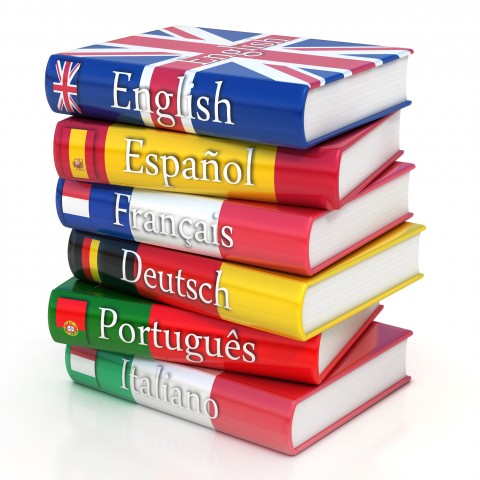
Parlo 6 lingue. (“I speak six languages.”)
- Parli (bene) l’italiano? (“Do you speak Italian (well)?”)
► Parlo bene l’italiano. (“I speak Italian well.”)
► Parlo un poco il francese. (“I speak a little French.”)
► Sono fluente. (“I am fluent.”)
► Così così. (“So-so.”)
► Solo qualche parola. (“Only a few words.”)
- Che lingua si parla nel tuo paese? (“What language is spoken in your country?”)
► In Tunisia, si parla arabo e francese. (“In Tunisia, we speak Arabic and French.”) - Quante lingue parli? (“How many languages do you speak?”)
- È difficile imparare il [ ]? (“Is it difficult to learn [ ]?”)
► Un po’, soprattutto la grammatica. (“A little, especially the grammar.”)
► È facile! Io ho imparato con ItalianPod101. (“It’s easy! I learned with ItalianPod101.”)
- Da quanto tempo studi l’italiano? (“How long have you studied Italian?”)
► Da due anni. (“Two years.”)
► Ho cominciato due anni fa. (“I started two years ago.”)
► L’ho studiato per tre anni. (“I studied it for three years.”)
- Dove hai studiato l’italiano? (“Where did you study Italian?”)
► Ho studiato italiano all’università / in una scuola di lingue / con l’app ItalianPod101!
(“I studied Italian at the university / in a language school / with the ItalianPod101 app!”) - Quando hai imparato a parlare l’italiano? (“When did you learn to speak Italian?”)
► Ho imparato da piccola. (“I learned when I was a kid.”)

4 – Do You Like… ?
You can learn a lot from people, just by asking what they like and listening to their answers. In order to do that, you first might want to practice the particular construction of the Italian verb mi piace (“I like”). It is an impersonal verb that literally translates to “it pleases me”. So you have to remember to change the verb, depending on what you like.
- Mi piace la pizza. (singular, “I like pizza.”)
Mi piacciono gli spaghetti. (plural, “I like spaghetti.”)
- Ti piace Roma? (“Do you like Rome?”)
►Mi piace, anche se è un po’ caotica. (“I like it, even if it’s a bit chaotic.”) - Come ti sembra Milano? (“How do you like Milan?”)
►La trovo bella e dinamica. (“I find it beautiful and dynamic.”) - Preferisci la birra o il vino con la pizza? (“Do you prefer beer or wine with pizza?”)
►Preferisco la birra con la pizza e il vino con gli spaghetti. (“I prefer beer with pizza and wine with spaghetti.”)
- Ti piace la cucina italiana? (“Do you like Italian food?”)
►Tantissimo. Mi fa impazzire! (“A lot. It drives me crazy!”) - Ti piacciono le spiagge italiane? (“Do you like Italian beaches”)
►Moltissimo, e adoro le isole! (“A lot, and I love the islands!”)
- Ti piacciono le canzoni napoletane? (“Do you like Neapolitan songs?”)
►Sono belle, ma non capisco le parole… (“They’re beautiful, but I don’t understand the words … “)

Cosa preferisci? (“What do you prefer?”)
5 – What Do You Do?
Nowadays, we tend to identify ourselves and other people with the professional activity. It might not be the best way, but it is what it is…
People’s jobs and professions are an important part of their life, so it is natural to ask about it. Just remember that, in Italy, you are not supposed to ask about money and people’s salary.
- Che cosa fai? (“What do you do?”)
- Di che cosa ti occupi? (“What is your occupation/activity?”)
► Sono medico. (“I’m a doctor.”)
Notice how in Italian you don’t normally put the article before your occupation:
Sono medico. (“I’m a doctor.”)
Sono professoressa di italiano. (“I’m an Italian teacher.”)
Sono giornalista sportivo. (“I’m a sport reporter.”) ► Mi occupo di progetti multimediali. (“I manage multimedia projects.”)
► Faccio l’insegnante. (“I am a teacher.”)
- Che cosa studi? (“What do you study?”)
► Studio musica barocca. (“I study baroque music.”) - Qual è la tua specializzazione? (“What is your major? / What do you specialize in?”)
► Mi sto specializzando in biologia marina. (“I am specializing in marine biology.”) - Quale sarà il tuo prossimo progetto? (“What will be your next project?”)
► Ho in programma di scrivere un blog sulla lingua italiana. (“I plan to write a blog about the Italian language.”)
- ➜ If you want to know other names of professions in Italian, don’t miss our free vocabulary list on Jobs.
6 – What Do You Like to Do in Your Free Time?
Sure, asking about jobs and careers might be interesting… but the real fun questions and answers are in people’s hobbies and activities during their free time.
Finding out what others do will help you find common ground and common interests. So, let’s start asking the really important questions.
- Cosa fai nel fine settimana? (“What do you do in the weekends?”)
- Come passi il tempo libero? (“How do you spend your free time?”)
► Mi piace andare al cinema / leggere / giocare ai videogiochi. (“I like going to the movies / reading / playing video games.”)
► Preferisco passare del tempo con i miei bambini. (“I prefer spending time with my kids.”) - Hai qualche hobby? (“Do you have any hobbies?”)
► Colleziono / faccio la collezione di farfalle e francobolli. (“I collect butterflies and stamps.”) - Qual è il tuo hobby preferito? (“What’s your favorite hobby?”)
► Mi piace fare composizioni floreali. È molto rilassante. (“I like making flower arrangements. It is very relaxing.”) - Fai / Pratichi sport? (“Do you practice any sports?”)
- Che sport fai / pratichi? (“What sports do you do?”)
► Faccio sport estremi. (“I do extreme sports.”)
► Vado in palestra tutti i giorni. (“I go to the gym every day.”)
► Sono pigro/a, non faccio molto sport. (“I am lazy, I don’t play any sports.”) - Che tipo di [musica / libri / film / serie] preferisci? (“What kind of [music / books / movies / series] do you prefer?”)
► Mi piacciono i romanzi storici. (“I like historical novels.”)
► Adoro le serie coreane. (“I love Korean series.”)
► Il mio genere preferito è il jazz, e il tuo? (“My favorite music is jazz, and yours?”) - Chi è il tuo artista / scrittore / attore / musicista preferito/a? (“Who is your favorite artist / writer / actor / musician?”)
► Mi piacciono gli artisti contemporanei, ma non sopporto l’arte astratta. (“I like contemporary artists, but I can’t stand abstract art.”)
► Ascolto ogni genere di musica, ma il mio musicista preferito è… (“I listen to all kinds of music, but my favorite musician is…”) - Che [libro / film / serie] mi consigli? (“What [book / movie / series] do you suggest?”)
► Ho appena visto… Te lo consiglio. (“I just watched… I recommend it.”)
► Hai visto l’ultimo [film / serie] di…? È bellissimo/a! (“Have you seen the latest [film / series] of …? It’s beautiful!”)

Cosa fai nel tempo libero? (“What do you do in your free time?”)
7 – What’s Wrong?
Sometimes things get complicated, and not all questions can be about fun and travel. An important role of friends is to understand if something is not right, and asking about it might be the first step to finding a solution to the problem or simply a way to make the other person feel better.
- Che / Cosa c’è? (“What’s up?/What’s wrong?”)
- Che / Cosa succede? (“What happens?/What’s the matter?”)
- Ci sono problemi? (“Any problems?”)
- Qualcosa non va? (“Something wrong?”)
► Va tutto bene. (“Everything is fine.”)
► Ho un problema, possiamo parlare? (“I have a problem, can we talk?”)
► È tutto a posto. (“It’s all right.”)
8 – How Much Is It?
And last but not least, here is a list of very useful questions, especially if you are going around markets and mercatini and want to buy or bargain with someone.
- Quanto costa? (“How much does it cost?”)
- Quant’è? (“How much is it?”)
- Quanto viene al chilo / litro? (“How much is it per kilo / liter?”)
- Posso avere uno sconto? (“Can I get a discount? “)
► Costa … euro. (“It costs … euros.”)
► È … euro. (“It’s … euros.”)
► Viene … euro al chilo / litro. (“It’s … per kilo / per liter.”)
► È caro. Costa troppo. (“It’s expensive. It costs too much.”)
► È economico. Costa poco. (“It’s cheap. It doesn’t cost much.”)
► È conveniente. (“It’s convenient.”)
► Vale la pena. (“It’s worth it.”)
► È già scontato. Non posso fare un ulteriore sconto. (“It’s already discounted. I can’t apply more of a discount.”)
- ➜ Interested in knowing more words to go shopping in a supermarket? Check out our free vocabulary lists on ItalianPod101.com.
3. Conclusion
In this guide, you’ve learned the most common questions in Italian, from the question words to the most common topics, and now you are ready for any type of conversation with friends and colleagues.
Did we forget any important topic you’d like to learn about? Do you feel ready to get out there and express yourself using everything you’ve learned today?
A good way to practice is to take each of the questions we’ve covered today and imagine how you would answer them. Maybe you’ll need to do some research on the sentence structures or key words, but it will be a great way to learn how to talk about yourself.
Learning how to talk about personal topics is always worth the time, as you can use this knowledge in any situation, with your friends or people you’ve just met.
Make sure to explore ItalianPod101, as we have plenty of free resources to help you practice your grammar and learn new words. Our vocabulary lists are also useful for revisiting new words and practicing their pronunciation.
Remember that you can also use our premium service, MyTeacher, to get personal one-on-one coaching. Practice questions and answers in Italian with your private teacher so they can give you personalized feedback and advice, and help you with the pronunciation.
About the Author: Jessica Barbagallo grew up on the sunny island of Sicily, in the south of Italy. She has lived in Florence, Milan, New York, Vancouver, Rio de Janeiro, and São Paulo. After a career in digital marketing, she went back to what is most fun to her: teaching languages!

Our 2020 Guide to the CILS Italian Test

Maybe you’ve already thought about taking an Italian proficiency test, or maybe you have no idea what we’re talking about. In this article, we’ll explain why it’s important to take an Italian test like this one, and we’ll guide you through everything you’ll need to do to sign up and pass the most widely accepted proficiency test (CILS). By the time you’re done reading, you’ll be totally prepared for the big day—even if this is your first time hearing about the test.
Spoiler alert: You need to get started six months beforehand!
 Table of Contents
Table of Contents
- What is a Proficiency Test?
- Why Take a Proficiency Test?
- What is the CILS Certification?
- How to Get Started
- What to Expect on the Day of the Test
- The CILS DUE-B2 Test
- Winning Strategies for Taking the CILS Exam
- How to Prepare for the CILS Exam
- Conclusion
1. What is a Proficiency Test?

Are you ready to be tested…?
Nowadays, in order to attain any approved language certificate, you must first be tested on the four basic competencies (Reading, Writing, Listening, and Speaking). These tests are quite thorough; they might last a few hours, or even be spread out over the course of two days. Depending on where you are in your language studies, you would apply for one of the different levels (A1, A2, B1, B2, C1, C2).
In regards to which exam to take, there are a few options for recognized certifications, each with just slight differences that mainly correlate with your final goal. Which takes us to the next question…
2. Why Take a Proficiency Test?
There are many reasons why you might want to take certain Italian exams or attain Italian language certifications:
- To check your progress
- To look good on your CV
- To qualify for a school, a university, a job, etc.
- To apply for Italian citizenship (as of December 2018, a basic (B1) level of Italian is required to apply)
- To be able to teach Italian
What’s your motivation?
In this guide, we’ll tell you all about the best-known and most-renowned certification, called CILS. We’ll walk you through everything you need to know about these comprehensive tests, and try to answer your questions:
- What is CILS?
- What should you expect?
- How can you prepare?
Are you ready?
3. What is the CILS Certification?
The CILS Certification, or Certificazione di italiano come lingua straniera (“Certificate of Italian as a Foreign Language”), is a qualification officially recognized by the Italian state, based on an agreement with the Ministry of Foreign Affairs. It certifies students’ degree of competence in the Italian language.
Why do you need that?
An official certification is often necessary for admission into Italian universities, and it could be helpful if you plan to have professional contact with Italy. This certification was originally devised by the Università per Stranieri di Siena, but today, it’s administered all over the world. You can just choose a school or a university near you and take the exam there.
The certification follows the six levels of competence determined by the Common European Framework of Reference (CEFR) of the Council of Europe. Each level certifies your language ability, including whether you can communicate effectively in a specific social or professional context.
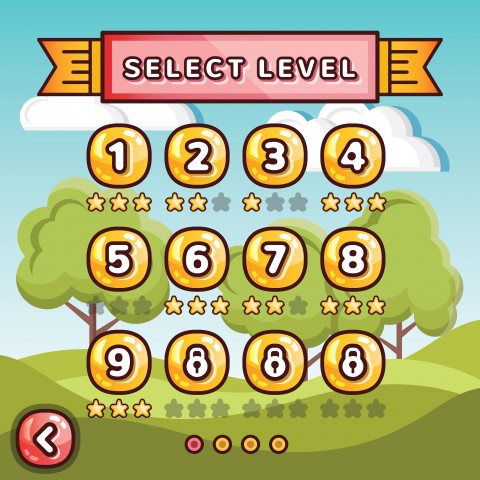
Choose your level carefully!
How do you know what level you’re at and what test to choose for your certification? The first thing you should consider is what your current linguistic ability is and/or what level you need to achieve.
The following table outlines the basic differences between the levels and what they correspond to in terms of communication and grammar knowledge:
| Level | Description | You are able to: | Main grammar points |
| CILS A1 | Beginner It’s intended for learners with initial skills in the Italian language. In this level, you find different exams tailored to the various types of students, as follows:
The format is the same, but the content varies. | Understand short texts and use everyday expressions; Introduce yourself; Ask and answer questions about personal topics; Interact in a simple way |
|
| CILS A2 | ElementaryThis level certifies an initial competence, which still lacks autonomy from the communication point of view. Like the previous level, it’s divided into different modules according to the student:
| Understand expressions frequently used in relevant personal and professional areas; Communicate in simple exchanges on familiar and common topics, and exchange information; Express opinions with ease; Make invitations and apologize |
|
| CILS UNO-B1 | IntermediateThis level certifies that the student has the skills necessary to use the Italian language independently and adequately in the most frequent situations of daily life. This is the certification needed to apply for Italian citizenship. | Communicate in Italian in everyday situations in both written and oral form in an effective way (even if with a few errors); Understand the essential points of clear and articulated messages; Read the most popular and useful texts |
|
| CILS DUE-B2 | Upper-IntermediateThis is the level that certifies the full autonomy of communication. It’s the minimum level ofcompetence for access to the Italian university system for students, teachers, andresearchers. It’s also required to obtain scholarships or internships. | Understand the basic ideas of complex texts related to everyday or more abstract concepts; Utilize effective oral and written Italian (even if with a few errors); Interact easily during a stay in Italy or in work meetings |
|
| CILS TRE- C1 | AdvancedThis is the level of mastery in Italian proficiency: It means that you can communicate formally for social, academic, and professional purposes. Those who possess this level are able to interact formally in public institutions or companies, and to fit in in any situation. | Understand long and demanding texts and their implicit meaning Talk spontaneously and fluently without searching for your words too much; Use the language in an efficient and flexible manner at home, work, or school; Express your opinions on complex topics in a clear and structured manner, having full control over the linguistic tools |
|
| CILS QUATTRO-C2 | Proficient This is the level of full Italian language mastery. It means you can dominate not only all informal and formal situations, but also professional ones. It’s the level necessary to teach Italian abroad. | Understand effortlessly anything you read or hear; Summarize facts and arguments from various sources, written or spoken; Express yourself fluently, mastering slight nuances in meaning |
|
4. How to Get Started
So, if you made it this far, you’re probably serious about taking a certification test. If so, pay attention to the next steps of CILS exam preparation:
1. Find the closest venue offering the test and get in contact with them for information. Do this at least a couple of months before taking the exam.
2. Plan well in advance. Once you take the test, you’ll receive the results via email after a period of time that can vary from two to four months, depending on your level and the total number of candidates. So, it’s better if you start thinking about your certification at least six months before you’ll actually need it.

Plan in advance: six months should do!
4. DOs:
- The exams typically start at 8:30. Be on time, or you’ll lose the right to take the test;
- You NEED to take a photo ID with you (the same one you used for the registration);
- Bring a black pen (nothing else is allowed, and definitely no dictionaries or smart devices);
- Before and during the test, make sure you listen carefully and follow the instructions, especially about how to fill the answer sheets.
5. DON’TS:
- You cannot open the notebook before the start of the tests;
- You cannot review or correct tests related to the previous sections;
- You cannot move to the next section before the scheduled time;
- You cannot ask for explanations on the content of the tests;
- You cannot leave the room before the break, unless it’s for a serious need (so, make sure you go to the bathroom in advance).
5. What to Expect on the Day of the Test

Like all language proficiency tests, CILS certification is based on the four main communicative abilities (Listening, Reading, Writing, and Speaking). In addition, it contains an analytic section. Here’s how the exam is divided:
- Ascolto (“Listening comprehension”)
- Comprensione della lettura (“Reading comprehension”)
- Analisi delle strutture di comunicazione (“Analysis of communication structures”)
- Produzione scritta (“Writing test”)
- Produzione orale (“Speaking test”)
All levels have more or less the same structure, but obviously, the difficulty and complexity of the texts and contents are higher with each level.
In this guide, we’ll take into account only one of the levels: The CILS DUE B2. This is, in fact, the level where the student should have full autonomy in communicating without too many problems. It’s also the level that gives the student access to schools and universities, and it allows the student to apply to most jobs requesting knowledge of the Italian language.
But keep in mind that all of the instructions and tips to prepare for and approach the exam are largely the same, regardless of level.
6. The CILS DUE-B2 Test
The total duration of the exam is almost four hours, but be prepared to do the speaking test on a different day, mainly for logistic reasons. The maximum score you can receive for this certification is 100 (20 for each section), while the minimum passing score is 55. But be careful: You need to get at least 11 in each section if you want to pass!

Listen very carefully to the CILS audio recording…
1 – The Listening Comprehension
Duration: 30 minutes, three exercises for a total of 20 points. Minimum passing score is 11 points.
- In the listening comprehension test, you’ll hear a recording of a real-life dialogue at a regular speed. It can be a conversation, a telephone call, an interview, an instruction text, a radio program, etc., with two native speakers.
- The recordings will be played twice, and the timing includes the instructions as well as the time to fill in the answers.
- The test will be divided into three exercises in which you’ll be asked to answer questions and identify information, typically in a multiple-choice format.
2 – The Reading Comprehension
Duration: 50 minutes, three exercises for a total of 20 points. Minimum passing score is 11 points.
- The reading portion tests your ability to understand the general meaning of the information presented to you. You should expect extracts from books, newspapers, magazines, works of fiction, catalogs, instruction manuals, publicity, etc.
- The total amount of text that you’ll need to read and understand is around 1200-1400 words.
- There will be three parts, divided into a multiple-choice exercise, an exercise where you’ll need to find information in a text, and one based on the reconstruction of a text, following the logical and temporal sequence.
3 – Analysis of Communication Structures
Duration: 60 minutes, four exercises for a total of 20 points. Minimum passing score is 11 points.
- In this part of the CILS Italian exam, you’ll have to be able to analyze, summarize, or transform a text.
- There will be four parts, which can be multiple-choice, cloze (where you need to fill in missing words), or completion tests, mostly based on vocabulary or grammar points.
4 – The Writing Test
Duration: 70 minutes, two tests for a total of 20 points. Minimum passing score is 11 points.
- In this part of the test, you’ll have to produce two simple but well-structured written texts, showing that you’re able to describe events and experiences through a cohesive and coherent text. You’re also expected to clearly highlight the relationships between concepts.
- There will be two sections. The first will be centered on a description or narration, the review of a film / book / show, etc. (from 120 to 140 words). The second is usually a formal or informal letter (from 80 to 100 words).

Do you find it hard to write? The secret is to practice, practice, practice!
5 – The Speaking Test
Duration: 10 minutes, two tests for a total of 20 points. Minimum passing score is 11 points.
- In the final part of the CILS test, you’ll have to communicate effectively by having a coherent and well-structured conversation on a variety of situations. You can be asked to make a description, narrate an event, or express an opinion on various topics, clearly explaining your ideas and showing relevant examples. There will be two tests, both in the presence of an examiner: one monologue and one dialogue.
- For the dialogue, you’ll choose a topic among the three or four proposed to you, and the examiner will start asking questions. The duration of the dialogue should be around two or three minutes.
- For the monologue, the student is asked to talk about one topic chosen from a short list, which can also contain pictures to illustrate. The duration of the monologue should be about two minutes.
7. Winning Strategies for Taking the CILS Exam
Read or listen to the instructions very, very carefully. They are the first step to a good performance.
1. Be calm and relaxed, but at the same time, keep track of the time. Every section has a given time limit, which is more than enough to complete the task—unless you stubbornly stop too long on a single question. If you’re in doubt, make a mental note and come back to that question at the end of the section if you have time.
2. Take a peek at the questions beforehand, so you’ll have a basic notion about the topic and what you’ll be asked about during the listening or reading comprehension sections.
3. Read the text very carefully, trying to understand as much as possible. And then read it again. Underline or write notes on a separate piece of paper to help you organize your thoughts and your ideas.
4. If you don’t know an answer, try to guess it by exclusion. Sometimes, if you eliminate all the wrong or improbable answers, you’ll be left with just the correct answer.
5. In the speaking sessions, there’s often an initial part where the examiner asks personal questions (name, activity, origin, hobbies, etc.) to start assessing your level and to put you at ease. You’d better be ready and prepare a nice presentation about yourself!
6. Keep it simple! Try to avoid overly complicated sentences and structures. Write what you know, and avoid translating from English at all costs! Remember all of the Italian sentence patterns that you already know and use them.

It’s always important to have a strategy.
8. How to Prepare for the CILS Exam
There are many ways to prepare for the CILS exam. One of them is to take advantage of all the available resources that ItalianPod101.com offers.
Another good way to practice is to go to the official CILS site and take a simulated test. There, you’ll find a copy of a real test administered by the Università per Stranieri di Siena in 2012. You can also buy official books that will allow you to practice and study.
Be sure you have a good grasp of the grammar topics required for your level. And before anything else, search the ItalianPod101 database of grammar and vocabulary lessons.
Read as much as you can! Reading is a great exercise to expand your vocabulary and easily fix grammar structures and points in your mind. It will help you not only in the reading comprehension test, but in all of the other sections as well. Newspapers, magazines, books, letters—everything helps.
Listen to a wide variety of audios. You can find many online Italian radio shows and podcasts, or simply tune in to movies or series. Try to concentrate as much as possible, and maybe even listen with your eyes closed, to better understand what you’re hearing. Getting used to listening to native Italian speakers will give you the necessary confidence for the listening and speaking portions of the test.
Practice writing. Lose your inhibitions and write as often as you can. Keep your sentence patterns simple, but be effective and precise with your vocabulary. It can be very useful to use spell-checkers and translators, mainly to verify that your sentence is written correctly in terms of conjugation, spelling, agreements, etc.
- → Learn how to improve your reading, writing, speaking, and listening with one tool at ItalianPod101.com!

Just three words: Practice. Practice. Practice.
9. Conclusion
So, do you have everything you need to embark on this adventure and take the CILS certification test?
Whatever your strategy, know that you’ll always be able to count on a variety of ItalianPod101 resources: vocabulary lists, audio podcasts, grammar lessons, and much more.
Remember that you can also use our premium service, MyTeacher, for one-on-one interaction with your personal teacher, guidance, and ongoing assessment. You’ll receive personalized exercises (reading, writing, and speaking) with non-stop feedback, answers, and corrections, so you’ll be ready for your B2 in no time—all while having fun!

How to Master the Most Useful Italian Sentence Patterns

Have you ever asked yourself how we learn our native language when we’re kids? We keep hearing and repeating the same simple sentences over and over. That’s the only trick!
As an adult, it works the same way: You memorize a sentence structure, then you start changing the elements a little, and in the end, you start making the sentences more complex.
With this simple guide on forming sentences in Italian, we’ll help you memorize the most basic and useful Italian sentence patterns; with those, you’ll be able to generate hundreds of natural sentences. And in no time, you’ll be holding complex conversations with ease and confidence.
 Table of Contents
Table of Contents
- A is B: L’italiano è bello!
- Voglio imparare l’italiano con ItalianPod101.com!
- Love is all you need…
- Mi piace l’italiano!
- Bella Ciao and the Reflexive Verbs
- Asking politely: Scusi, posso…?
- Asking Questions
- Conclusion
1. A is B: L’italiano è bello!
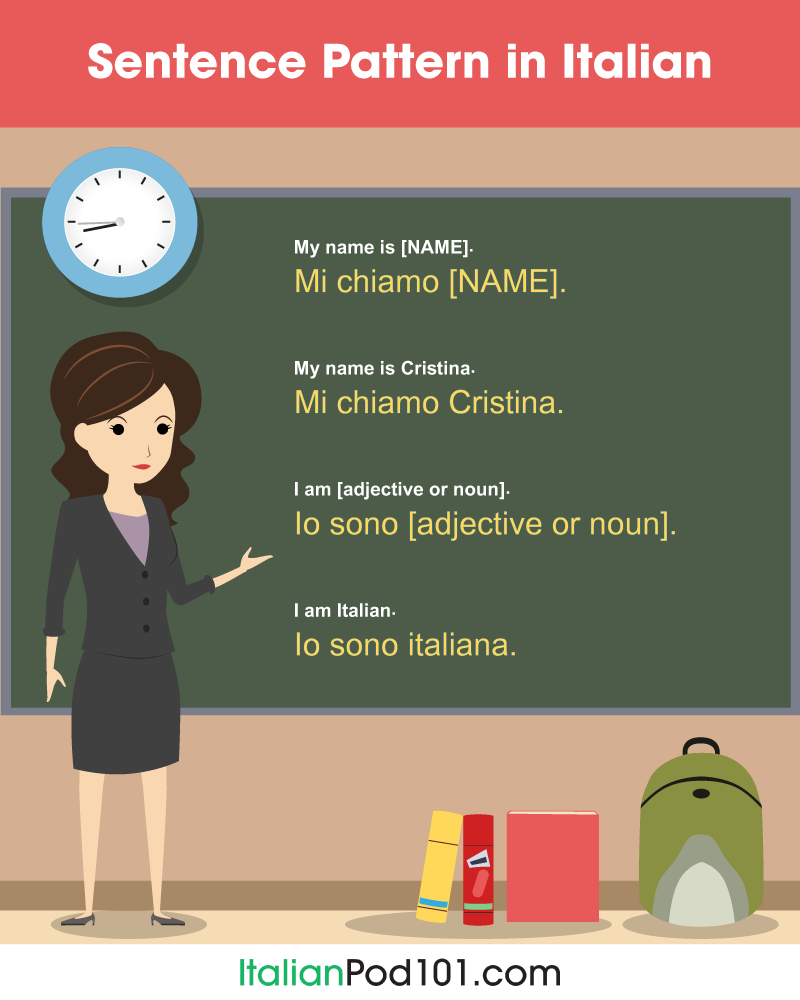
In Italian, if you want to describe a person or an object, you need to be able to say that A is B. Nothing’s easier! The only thing is that you need to know how to use and conjugate the verb essere (“to be”). And once you master that, you need to keep in mind that everything in Italian needs to agree in number (singular/plural) and gender (masculine/feminine).
- Mario è mio fratello. (“Mario is my brother.”)
- Maria è mia sorella. (“Maria is my sister.”)
There are already a lot of things you can say using this pattern:
- (Lei)* È professoressa di italiano. (“She is an** Italian teacher.”)
- (Voi) Siete molto simpatici. (“You are very nice.”)
- Gli amici sono americani. (“The friends are American.”)
*Notice how, in Italian, you don’t need to express the personal pronoun when it’s the subject of the verb (io, tu, lui/lei, noi, voi, loro), **and when you say someone’s profession, you can omit the article:
- (Io) Sono avvocata. (“I’m a lawyer.”) [for a female speaker]
- (Tu) Sei ingegnere. (“You are an engineer.”)
- Carlos è studente. (“Carlos is a student.”)
But what about when you want to say that A is not B? No problem. Anytime you need to express a negative statement, you just add the negation non (“not”) in front of the verb, as in:
- Maria non è mia sorella. (“Maria is not my sister.”)
- Questo orologio non è un regalo. (“This watch is not a present.”)
Notice also how the basic Italian sentence structure doesn’t change with most of the tenses (past, future, etc.).
- Giovedì sarà il mio compleanno. (“Thursday will be my birthday.”)
- Mario non era un bravo calciatore. (“Mario wasn’t a good soccer player.”)
And finally, if you need to ask a question, remember that, in Italian, you don’t need to do much. Just change your intonation, and you’ll have a perfect question.
- Sei ingegnere? (“Are you an engineer?”)
- Mario non era un bravo calciatore? (“Wasn’t Mario a good soccer player?”)
When we use adjectives to describe a person, a thing, or a situation, the structure stays exactly the same, including in the negative form or in other tenses:
- (Tu) Sei bellissima! (“You are very beautiful!”)
- La lasagna era deliziosa. (“The lasagna was delicious.”)
- Il museo che abbiamo visitato ieri era molto interessante. (“The museum we visited yesterday was very interesting.”)

The rose is red…[A] is [B]
2. Voglio imparare l’italiano con ItalianPod101.com!
Voglio (“I want”) is one of the Italian modal verbs (verbi servili) that are constructed by directly preceding the infinitive.
- Voglio imparare l’italiano con ItalianPod.101! (“I want to learn Italian with ItalianPod101.com!”)
- Devo parlare. (“I have to speak up.”)
- Posso fare. (“I can do it.”)
- So suonare. (“I know how to play.”)
You can probably guess by now what the pattern is for the negative and interrogative forms. Yes, you’re right! For the negative form, you just put non (“not”) in front of the verb; if you want to ask a question, you just change the intonation:
- Non voglio andare a scuola domani! (“I don’t want to go to school tomorrow!”)
- Sai suonare il sassofono? (“Can you play the saxophone?”)
Italian phrases change a little when we start using direct or indirect personal pronouns, which we can put in front of the conjugated verb (as usual):
- Lo voglio dire. (“I want to say it.”)
Or, we can attach it to the end of the infinitive:
- Lo voglio dire; = Voglio dirlo; (“I want to say it.”)
- Ti devo parlare; = Devo parlarti; (“I have to talk to you.”)
- Lo possiamo fare; = Possiamo farlo; (“We can do it.”)
- La so suonare; = So suonarla; (“I can play it.”)
3. Love is all you need…
Although it might be true that “All you need is love,” in the real world, outside of dreamy songs, we need a lot of things. In Italian, “to need” translates into avere bisogno di. It’s a slightly different structure than in English and you’d better get familiar with it, because when you travel to Italy, or when you’re in the company of Italian friends, you might need to say one of the following:
- Avete bisogno di informazioni? (“Do you need information?”)
- Hai bisogno di cambiare i soldi. (“You need to change the money.”)
- Il bambino ha bisogno di mangiare subito! (“The kid needs to eat right away!”)

Abbiamo bisogno d’amore! (“We need love!”)
Let’s take a look now at this Italian language sentence structure.
You’ve probably noticed that we’re conjugating the verb avere (“to have”), which means that the literal translation of avere bisogno di is “to have the need for.” The noun bisogno (“need”) never changes, regardless of who the subject is, or who or what you need.
Another important thing to remember is that the thing you need is introduced by the preposition di (“of”). When prepositions meet the article, they usually merge into a preposizione articolata.
- Ho bisogno del (=di + il) bagno. (“I need the bathroom.”)
- Hai bisogno della (=di + la) macchina? (“Do you need the car?”)
When what you need is expressed by an action (and therefore a verb) you can change the sentence by replacing avere bisogno di (“to need”) with dovere (“to have to”). Like in English, the final meaning in Italian is basically the same, with maybe just a slight difference:
- Ho bisogno di mangiare altrimenti svengo. (“I need to eat, otherwise I’ll faint.”) >> It’s necessary.
- Devo mangiare altrimenti svengo. (“I have to eat, otherwise I’ll faint.”) >> I have no choice.
4. Mi piace l’italiano!
In Italian, the verb piacere expresses the concept of “liking” something, and of showing tastes and preferences. Piacere uses a particular sentence structure: What you like (or don’t like) is the subject of the verb, while the person who likes (or dislikes) someone/something is expressed with an indirect personal pronoun.
If you try to translate it literally into English, you’ll have to change the order of the words a bit. Take a look:
- Mi piace la pasta. (Mi = a me) > “I like pasta.”
- Ti piace la pasta. (Ti = a te) > “You like pasta.”
- Le piace la pasta. (Le = a lei) > “She likes pasta.”
- Gli piace la pasta. (Gli = a lui) > “He likes pasta.”
- Ci piace la pasta. (Ci = a noi) > “We like pasta.”
- Vi piace la pasta. (Vi = a voi) > “You like pasta.”
- A loro piace la pasta. > “They like pasta.”
Can you see what happened here? In the Italian translation, the grammatical subject is no longer “I” (io); it turned around to be the pasta! So if we go for the literal English translation, it would be “Pasta (subject) pleases (third person plural verb) me.”
If the thing you like is plural, you use piacciono (“they please”).
- Mi piacciono gli spaghetti. > “I like spaghetti.”
- Ti piacciono i fumetti di Diabolik? > “Do you like Diabolik comic books?”
- Non ci piacciono le brutte notizie. > “We don’t like bad news.”
The verb piacere can also be followed by an infinitive.
- Non gli piace guidare. > “He doesn’t like to drive.”
- Ti piace ballare? > “Do you like dancing?”
- Mi piace camminare a piedi nudi. > “I like to walk barefoot.”
Many other verbs use the same Italian sentence construction as piacere. For example:
- Dispiacere (“to be sorry”) >> Mi dispiace per la confusione. (“I’m sorry for the mess.”)
- Bastare (“to suffice”/”to be enough”) >> Ci basta poco. (“We don’t need much.”)
- Mancare (“to miss something or someone”) >> Mi manca molto. (“I miss it a lot.”)
- Servire (“to need”) >> Gli servono due pomodori. (“He needs two tomatoes.”)
- Interessare (“to be interested in”) >> Ti interessa la storia? (“Does history interest you?”)
- Sembrare (“to seem”/”to appear”) >> Ci sembra molto bello. (“It seems very nice to us.”)
- Dare fastidio (“to annoy”/”to bother”) >> Mi dai proprio fastidio. (“You really bother me.”)
5. Bella Ciao and the Reflexive Verbs
Lately, the traditional hymn of freedom and resistance Bella Ciao has become very popular. But have you ever realized how it’s also a hymn to the power of reflexive verbs? Just look at the very first lyrics:

Is it a protest or a bank robbery…? 😉
Una mattina mi son(o) svegliato,
o bella ciao, bella ciao, bella ciao ciao ciao!
Una mattina mi son(o) svegliato
e ho trovato l’invasor.
One morning I awakened,
oh bella ciao, bella ciao, bella ciao, ciao, ciao!
One morning I awakened
And I found the invader.
One very common structure in Italian is to use reflexive verbs. These verbs express that the subject and the object of the action are the same:
- (io) mi sono svegliato. (“I woke up.” Literally: “I woke myself up.”)
- (io) mi lavo le mani. (“I wash my hands.” Literally: “I wash myself the hands.”)
As you can see from the examples above, the reflexive verb is always preceded by a reflexive pronoun. So the pattern is always:
[subject] [reflexive pronoun – same person as the subject] [verb]
[Maria] [si – (lei)] [sveglia]
Further, an Italian sentence that uses reflexive verbs requires the auxiliary essere (“to be”) in the past and all compound tenses. It also needs the consequent agreement of the past participle with the subject, as usual.
- Si sono sposati l’anno scorso. (“They got married last year.”)
- Carla, ti sei arrabbiata con me? (“Did you get angry at me?”)
- Ieri non mi sono rasato. (“Yesterday, I didn’t shave.”)
In Italian, many common reflexive verbs are those related to routine daily actions. Reflexive verbs, in the infinitive form, will have the third person reflexive pronoun -si attached to the end, which can be a little confusing. Let’s see a few examples to clear things up.
Svegliarsi (“to wake up”) > Mi sveglio alle sei. (“I wake up at six.”)
Alzarsi (“to get up”) > Ti alzi? (“Do you get up?”)
Lavarsi (“to wash up”) > John si lava solo la domenica. (“John washes up only on Sunday.”)
Vestirsi (“to dress up”) > Mi vesto per andare alla festa. (“I dress up to go to the party.”)
Mettersi (“to wear”) > Non ti metti il vestito rosso? (“Don’t you wear the red dress?”)
Pettinarsi (“to comb”) > Jessica non si pettina mai. (“Jessica never combs her hair.”)
Radersi (“to shave”) > Si rade un giorno sì e un giorno no. (“He shaves every other day.”)
Truccarsi (“to put on makeup”) > Le bambine si truccano a Carnevale. (“Girls put on makeup for Carnival.”)
Addormentarsi (“to fall asleep”) > Mi addormento a mezzanotte. (“I fall asleep at midnight.”)

Reflecting on reflexive verbs…
Many Italian verbs that express a physical state or a state of mind are also reflexive:
Annoiarsi (“to get/be bored”) > A teatro ci annoiamo. (“We get bored at the theater.”)
Arrabbiarsi (“to be angry”) > Perché ti arrabbi? (“Why do you get angry?”)
Chiamarsi (“to be called”) > Ciao, mi chiamo Elena. (“Hi, I’m called Elena.”)
Divertirsi (“to have fun”) > Sono sicura che vi divertiete. (“I’m sure you’ll have fun.”)
Innamorarsi (“to fall in love”) > Mi sono innamorata di te. (“I fell in love with you.”)
Lamentarsi (“to complain”) > Si lamentano sempre. (“They complain all the time.”)
Preoccuparsi (“to worry”) > Non ti preoccupare. (“Don’t worry.”)
Rilassarsi (“to relax”) > La domenica mi rilasso in famiglia. (“On Sunday I relax with my family.”)
Sedersi (“to sit down”) > Ci sediamo un poco? (“Shall we sit down for a while?”)
Sentirsi (“to feel”) > Non ti senti bene? (“Aren’t you feeling well?”)
Sposarsi (“to get married”) > Si sposano a maggio. (“They get married in May.”)
Vergognarsi (“to be ashamed”) > Mi vergogno di quello che ho fatto. (“I’m ashamed of what I’ve done.”)
6. Asking politely: Scusi, posso…?
1- Posso?
There are many situations where you need to politely ask to go someplace, or to get information or a service. Here’s the correct Italian language sentence pattern for you to use in order to make the best impression with your politeness.

Posso andare al bagno? (“May I go to the bathroom?”)
As in English, Italian uses the verb potere (“can”/”may”), followed by an infinitive, to ask for permission to do or get something.
- Posso entrare? (“May I come in?”)
- Posso andare in bagno? (“Can I go to the bathroom?”)
- Posso alzarmi da tavola? (“Can I be excused?” Literally: “Can I leave the table?”)
- Posso avere il tuo numero di telefono? (“Can I have your phone number?”)
2- Scusa… Scusi…
Often, before asking for something, Italians say Scusa… (informal) or Scusi… (formal). But what does that mean? It’s actually a short version for saying “Excuse me,” and in some situations, it can also be used to say “Sorry.” But going back to the sentence pattern for politely asking for something, scusa is a way to draw the attention of the person you’re about to ask permission from.
- Scusi, posso entrare? (“Excuse me, may I come in?”)
- Scusa, posso avere il tuo numero di telefono? (“Excuse me, can I have your phone number?”)
A common situation where you should use this structure is when you’re at a coffee bar or a restaurant, and you want to draw the waiter’s or bartender’s attention before making your request:
- Scusi, posso avere un cappuccino? (“Excuse me, can I get a cappuccino?”)
- Scusi, possiamo avere il conto? (“Excuse me, can we have the bill?”)
Or, if you’re lost in Milan or Rome and you need directions (or the time):
- Scusi, può dirmi come arrivo al Duomo? (“Excuse me, can you tell me how to get to the Duomo?”)
- Scusi, può dirmi che ore sono? (“Excuse me, can you tell me the time?”)
Remember to use the formal version, scusi, when you talk to an older person, someone you don’t know, or anyone you want to show respect to (and with waiters and bartenders). The informal scusa is for young people, friends, and family.
3- Potrei…?
Finally, another way to ask politely for something in Italian is to use the present conditional. This shows that you’re asking something, but you’re not ordering. You’re rather expressing a wish.
- Potrei avere un cappuccino? (“Could I have a cappuccino?”)
- Mi farebbe un cappuccino? (“Could you make me a cappuccino?”)
- Mi potresti dire l’ora? (“Could you tell me the time?”)
7. Asking Questions
1- About things: Che cos’è …?
Cosa (“thing”) is the most indeterminate and comprehensive word in the Italian language. With the word cosa, you can indicate anything that exists, whether in an abstract sense or in reality. It’s also the interrogative pronoun we use to ask about things when we want to know what they are, what they do, etc.

Cosa? Dove? Quando? Too many questions!!!
It’s interesting to notice how there are different ways to say “what” in Italian:
- Che
- Cosa
- Che cosa
These pronouns are always followed by a verb, either essere (if you’re asking what things are), or any other verb (if you’re asking about any other thing).
- Che fai stasera?
- Cosa fai stasera?
- Che cosa fai stasera?
What’s the difference between the above sentences? None whatsoever. They all mean: “What do you do tonight?” Similarly, the following sentences all mean: “What is an interrogative pronoun?” (By the way, if you want to know more about interrogative pronouns in Italian, you can review all about pronouns on ItalianPod101.)
- Che è un pronome interrogativo?
- Cos’è un pronome interrogativo?
- Che cos’è un pronome interrogativo?
Did you see what happened with cos’è (in cos’è successo)? When you have cosa + è, the final “a” is dropped, and you add an apostrophe (‘) to indicate that there was an elision. This is quite common in Italian, and we’ll see more examples of this in the next chapter.
2- Asking about a location: Dov’è …?
It might be true that all roads lead to Rome, but when you’re in Rome and you need directions to get around, what do you do? For that, you simply use the adverb dove (“where”). Remember what happened with cosa + è = cos’è (elision). The exact same phenomenon happens here: dove + è = dov’è.
- Dov’è il bagno? (“Where is the bathroom?”)
- Dove si prende l’autobus? (“Where do we take the bus?”)
- Dove va questo treno? (“Where does this train go?”)
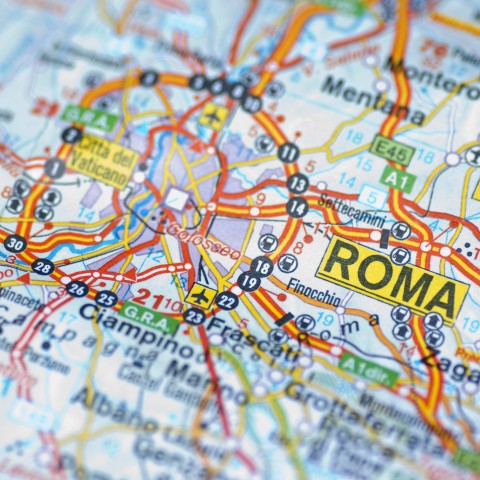
All the roads lead to Rome, but you can still get lost…
Another common way to ask where things are is by using the verb trovarsi. It’s a reflexive verb meaning “to find oneself” / “to happen to be” / “to be situated.”
- Dove si trova il bagno? (“Where is the bathroom?”)
- Dove mi trovo? (“Where am I?”)
And finally, you can hear Italians use the verb stare (literally “stay”) to indicate where things are (especially within Rome):
- Dove stanno i miei calzini? (“Where are my socks?”)
- Stanno nel primo cassetto, come sempre! (“They are in the first drawer, as always!”)
3- Asking about time: Quand’è?
Tell me Quando Quando Quando…
This old Italian standard from the ‘60s is the perfect soundtrack to introduce the final basic Italian sentence pattern: Asking about time. Quando (“when”) is used pretty much the same way as the other interrogative words, including the trick quando + è = quand’è.
- Quand’è il tuo compleanno? (“When is your birthday?”)
- Quando arriva il treno? (“When does the train get in?”)
- Quando cominciano le vacanze di Natale? (“When does the Christmas vacation start?”)
Obviously, you use quando if you mean to ask a general question about time, but you can change the formula if you want to be more specific:
- In che anno sei nato? (“What year were you born?”)
- A che ora arriva il treno? (“What time does the train get in?”)
- Che giorno cominciano le vacanze di Natale? (“What day do the Christmas vacations start?”)

8. Conclusion
Do you think you know enough about the most useful Italian sentence structures now? Do you feel confident about diving into a conversation in Italian, using basic sentences, questions, and polite requests? What about discussing your likes and desires?
Let us know if there’s any other topic or sentence pattern that you would like to learn more about. And make sure to explore our site, ItalianPod101.com, to take advantage of our free resources, vocabulary lists, and mobile apps to practice whenever and wherever you want.
Remember that you can also use our premium service, MyTeacher, to learn Italian with your own teacher. You’ll also continue to study at your own pace with fast, fun, and easy Italian lessons, including 220+ hours of audio/video courses, study tools, and more!

Italian Keyboard: How to Install and Type in Italian

You asked, so we provided—easy-to-follow instructions on how to set up your electronic devices to write in Italian! We’ll also give you a few excellent tips on how to use this keyboard, as well as some online and app alternatives if you prefer not to set up a Italian keyboard.
 Table of Contents
Table of Contents- Why it’s Important to Learn to Type in Italian
- Setting up Your Computer and Mobile Devices for Italian
- How to Activate an Onscreen Keyboard on Your Computer
- How to Change the Language Settings to Italian on Your Computer
- Activating the Italian Keyboard on Your Mobile Phone and Tablet
- Italian Keyboard Typing Tips
- How to Practice Typing Italian
1. Why it’s Important to Learn to Type in Italian

Learning a new language is made so much easier when you’re able to read and write/type it. This way, you will:
- Get the most out of any dictionary and Italian language apps on your devices
- Expand your ability to find Italian websites and use the various search engines
- Be able to communicate much better online with your Italian teachers and friends, and look super cool in the process!
2. Setting up Your Computer and Mobile Devices for Italian

It takes only a few steps to set up any of your devices to read and type in Italian. It’s super-easy on your mobile phone and tablet, and a simple process on your computer.
On your computer, you’ll first activate the onscreen keyboard to work with. You’ll only be using your mouse or touchpad/pointer for this keyboard. Then, you’ll need to change the language setting to Italian, so all text will appear in Italian. You could also opt to use online keyboards instead. Read on for the links!
On your mobile devices, it’s even easier—you only have to change the keyboard. We also provide a few alternatives in the form of online keyboards and downloadable apps.
3. How to Activate an Onscreen Keyboard on Your Computer
1- Mac
1. Go to System Preferences > Keyboard.
2. Check the option “Show Keyboard & Character Viewers in Menu Bar.”
3. You’ll see a new icon on the right side of the main bar; click on it and select “Show Keyboard Viewer.”

2- Windows
1. Go to Start > Settings > Easy Access > Keyboard.
2. Turn on the option for “Onscreen Keyboard.”
3- Add-ons of Extensions for Browsers
Instead of an online keyboard, you could also choose to download a Google extension to your browser for a language input tool. The Google Input Tools extension allows users to use input tools in Chrome web pages, for example.
4. How to Change the Language Settings to Italian on Your Computer

Now that you’re all set to work with an onscreen keyboard on your computer, it’s time to download the Italian language pack for your operating system of choice:
- Windows 8 (and higher)
- Windows 7
- Mac (OS X and higher)
1- Windows 8 (and higher)
- Go to “Settings” > “Change PC Settings” > “Time & Language” > “Region & Language.”
- Click on “Add a Language” and select “Italian (Italy).” This will add it to your list of languages. It will appear as Italiano (Italia) with the note “language pack available.”
- Click on “Italiano (Italia)” > “Options” > “Download.” It’ll take a few minutes to download and install the language pack.
- As a keyboard layout, you’ll only need the one marked as “Italian – Italiano.” You can ignore other keyboard layouts.
2- Windows 7
1. Go to Start > Control Panel > Clock, Language, and Region.
2. On the “Region and Language” option, click on “Change Keyboards or Other Input Methods.”
3. On the “Keyboards and Languages” tab, click on “Change Keyboards” > “Add” > “Italian.”
4. Expand the option of “Italian” and then expand the option “Keyboard.” Select the keyboard layout marked as “Italian.” You can ignore other keyboard layouts. Click “OK” and then “Apply.”
3- Mac (OS X and higher)
If you can’t see the language listed, please make sure to select the right option from System Preferences > Language and Region
1. From the Apple Menu (top left corner of the screen) go to System Preferences > Keyboard.
2. Click the Input Sources tab and a list of available keyboards and input methods will appear.
3. Click on the plus button, select “Italian,” and add the “Italian” keyboard (not the “Italian – Typewriter.”)
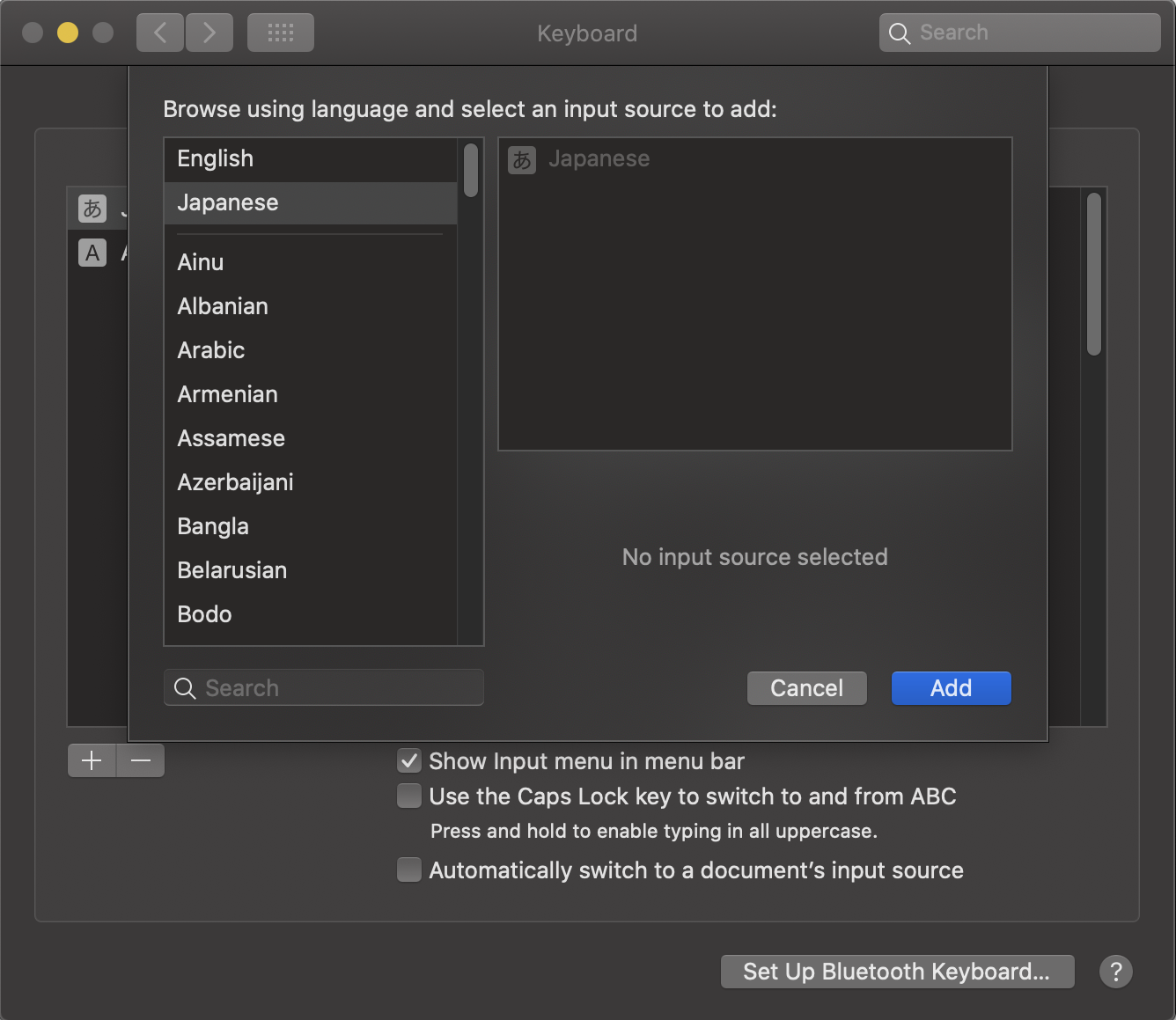
5. Activating the Italian Keyboard on Your Mobile Phone and Tablet
Texting and searching in Italian will greatly help you master the language! Adding a Italian keyboard on your mobile phone and/or tablet is super-easy.
You could also opt to download an app instead of adding a keyboard. Read on for our suggestions.
Below are the instructions for both iOS and Android mobile phones and tablets.
1- iOS
1. Go to Settings > General > Keyboard.
2. Tap “Keyboards” and then “Add New Keyboard.”
3. Select “Italian” from the list.
4. When typing, you can switch between languages by tapping and holding on the icon to reveal the keyboard language menu.
2- Android
1. Go to Settings > General Management > Language and Input > On-screen Keyboard (or “Virtual Keyboard” on some devices) > Samsung Keyboard.
2. Tap “Language and Types” or “ + Select Input Languages” depending on the device and then “MANAGE INPUT LANGUAGES” if available.
3. Select “Italiano” from the list.
4. When typing, you can switch between languages by swiping the space bar.
3- Applications for Mobile Phones
If you don’t want to add a keyboard on your mobile phone or tablet, these are a few good apps to consider:
6. Italian Keyboard Typing Tips
Typing in Italian can be very challenging at first! Therefore, we added here a few useful tips to make it easier to use your Italian keyboard.

1- Computer
- The key for “è” (with grave accent) is usually on the right of the P key; “é” (with acute accent) is also on the right of the P key, but you need to press Shift. “ò” is on the right of the L key; “à” is on the right of the “ò” key. “ù” is on the right of the “à” key.
- The apostrophe is on the right of the zero key and “ì” is on the right of the apostrophe key.
- A useful shortcut for macOS:
- È = Alt + Shift + E
- The rest of the accented letters never occur at the beginning of a sentence or word.
2- Mobile Phones
- To add accents on a vowel, keep the key pressed until the accented letter appears and choose it.
7. How to Practice Typing Italian
As you probably know by now, learning Italian is all about practice, practice, and more practice! Strengthen your Italian typing skills by writing comments on any of our lesson pages, and our teacher will answer. If you’re a ItalianPod101 Premium PLUS member, you can directly text our teacher via the My Teacher app—use your Italian keyboard to do this!

A Simple Guide to Italian Verb Conjugation

Verbs are everywhere! Whatever you’re trying to say or write in Italian, you’re going to need to use a verb and a subject. And guess what? Right there, you already need to conjugate the verb to use it correctly.
- Vado al cinema. Vieni con me? Cosa dici?
“I go to the movies. Will you come with me? What do you say?”
For example, in this simple sentence, you’ll have to know the conjugations of the verbs andare (“to go”), venire (“to come”), and dire (“to say”).
Italian verb conjugation might seem tough at first, but with a few tips (and ItalianPod101’s resources), you’ll learn how to conjugate Italian verbs and become a real pro!
 Table of Contents
Table of Contents
- What Does Conjugation Mean?
- Verb Groups
- Conjugation Examples
- Irregular Verbs and Their Conjugations
- Quiz
- Tips to Improve and Practice Your Italian Conjugations
1. What Does Conjugation Mean?
What is a conjugation and what do you need it for? A conjugation is a basic process—common to most languages—by which you change the verb ending in order to indicate who is doing the action (me, you, he/she, we, you, they), with what intention (realistic, wish, opinion, order, etc.), and when (present, past, future, etc.).

Who? When? What intention? Ask questions to start conjugating.
Also, in Italian verb conjugation, you may have to:
- Conjugate auxiliary verbs (avere/essere = “to have”/”to be”)
- Conjugate modal verbs (verbi servili: potere, dovere, volere, ecc. = “can, must, want, etc.”)
- Add a participio passato (“past participle”)
- Watch out for Italian irregular verbs and irregular verb forms (dire, fare, andare, stare, venire, perdere, chiudere, and a few more…)
Let’s look at this in more detail:
1- Who?
| 1st person singular | Io | “I” |
| 2nd person singular | tu / Lei* | “you” (casual) / “you” (formal) |
| 3rd person singular | lui / lei | “he” / “she” |
| 1st person plural | noi | “we” |
| 2nd person plural | voi | “we” |
| 3rd person plural | loro | “they” |
*It’s important to remember that the polite form of address is in the third person singular feminine. So, for example, the phrase “What do you eat?” can be:
- Tu cosa mangi? (informal)
- Lei cosa mangia? (formal)
It can be a little confusing at the beginning, but since the formal way of address is extremely common in Italian, it’s a good idea to practice using it from the very beginning.
Remember that the person who is doing the action is very important because, in Italian verb conjugation, every person of the verb has a different ending. But we’ll see that in a little bit.
2- With what intention?
In every sentence, you can ask “What is the intention of this action?” This intention is called il modo (“the mood”), and it reflects whether the intention is realistic, possible, or uncertain, or if it’s a wish, an opinion, or an order.
Let’s look at this Italian conjugation table and study the moods to determine what they mean.
| Indicativo (“Indicative”) | Mangio una pizza. (“I eat a pizza.”) | Used to express a real and certain fact. This is, by far, the most common mood in Italian. |
| Conjuntivo (“Subjunctive”) | Credo che sia meglio. (“I think it is better.”) | Used to express an opinion, a possibility, a desire, or something uncertain. It’s usually supported by certain verbs and conjunctions. |
| Condizionale (“Conditional”) | Vorrei andare. (“I would like to go.”) | Used to express a probability or a hypothesis. Usually, one fact depends on another. |
| Imperativo (“Imperative”) | Fai i compiti! (“Do your homework!”) | Used to give an order. |
| The examples above are called modi finiti (“finite moods”) because they define the action in a precise way, and they’re conjugated according to the person and the time. The following ones, on the other hand, are modi indefiniti (“indefinite moods”) as they don’t have a specific subject. They usually depend on other verbs, and—very good news—they don’t change! | ||
| Infinito (“Infinitive”) | Mangiare (“To eat”) | It’s an undetermined action, used as the basic form of the verb. |
| Gerundio (“Gerund”) | Sto dormendo. (“I am sleeping.”) | Often used in combination with stare, it can have many intentions. |
| Participio (“Participle”) | Serata danzante (“Dancing night”) | A word formed from a verb and used as an adjective. |
3- When?
Every action takes place in a specific time, called tempo (literally “time,” or “tense” in the context of a conjugation). The Italian tenses are presente, passato, and futuro, and they can be tempi semplici (“simple tenses”) when they’re made of just one word, or tempi composti (“compound tenses”) when they’re formed by the auxiliary (essere/avere) and the past participle.

Io amo, tu ami… (“I love, you love…”) The best conjugation of all!
Let’s look at the full Italian conjugations chart of all possible moods and tenses with the best Italian verb: amare (“to love”).
| MODI | TEMPI SEMPLICI | TEMPI COMPOSTI | |
| Finiti | Indicativo | Presente | Amo | Passato prossimo | Ho amato |
| Imperfetto | Amavo | Trapassato prossimo | Avevo amato | ||
| Passato remoto | Amai | Trapassato remoto | Ebbi amato | ||
| Futuro semplice | Amerò | Futuro anteriore | Avrò amato | ||
| Congiuntivo | Presente | Che io ami | Passato | Che io abbia amato | |
| Imperfetto | Che io amassi | Trapassato | Che io avessi amato | ||
| Condizionale | Presente | Amerei | Passato | Avrei amato | |
| Imperativo | Presente | Ama! | ||
| Indefiniti | Gerundio | Presente | Amando | Passato | Avendo amato |
| Participio | Presente | Amante | ||
| Passato | Amato | |||
| Infinito | Presente | Amare | ||
It’s true that there are quite a lot of tenses! But keep in mind that the Italian conjugations you’ll really have to master are the ones that are in bold, as they are by far the most common. They’re also the most practical ones for meaningful communication up to an intermediate Italian level. That sounds better, doesn’t it?
2. Verb Groups

In the Italian conjugation of verbs, there are three basic groups, divided according to the verb ending in the infinitive:
- 1st with the infinitive in -ARE
- 2nd with the infinitive in -ERE (verbs ending in -arre, -orre, and -urre belong to this group)
- 3rd with the infinitive in -IRE (verbs that add a -isc suffix belong to this group)
Regular Italian verbs are simple to conjugate because they all follow the same pattern, as you can see in the following chart:
| Io (“I”) | tu (“you”) | lui/lei (“s/he”) | noi (“we”) | voi (“you”) | loro (“they”) | |
| AMARE (“to love”) | Amo | Ami | Ama | Amiàmo | Amàte | Àmano |
| CREDERE (“to believe”) | Credo | Credi | Crede | Crediàmo | Credète | Crèdono |
| DORMIRE (“to sleep”) | Dormo | Dormi | Dorme | Dormiàmo | Dormìte | Dòrmono* |
*Notice how the position of the stress changes syllable. Try and read the three basic present conjugations, just to familiarize yourself with the rhythm of it.
As you can see, there are no major changes from one group to the other. But things do get a bit more complicated with Italian irregular verb conjugations, which involve some of the most common verbs.
3. Conjugation Examples

Now that you know that Italian conjugations are divided into three groups, let’s see in greater detail how each group behaves according to the person (who), the tense (when), and the mood (with what intention).
1- Verbs in -ARE
AMARE (“To love”)
| Indicative | Subjunctive | Conditional | Imperative | ||||
| Present | Absolute Past* | Imperfect | Future | Present | Present | Present | |
| io | amo | amai | amavo | amerò | ami | amerei | – |
| tu | ami | amasti | amavi | amerai | ami | ameresti | ama |
| lui/lei | ama | amò | amava | amerà | ami | amerebbe | – |
| noi | amiamo | amammo | amavamo | ameremo | amiamo | ameremmo | amiamo |
| voi | amate | amaste | amavate | amerete | amiate | amereste | amate |
| loro | amano | amarono | amavano | ameranno | amino | amerebbero | – |
PARLARE (“To talk”)
| Indicative | Subjunctive | Conditional | Imperative | ||||
| Present | Absolute Past* | Imperfect | Future | Present | Present | Present | |
| io | parlo | parlai | parlavo | parlerò | parli | parlerei | – |
| tu | parli | parlasti | parlavi | parlerai | parli | parleresti | parla |
| lui/lei | parla | parlò | parlava | parlerà | parli | parlerebbe | – |
| noi | parliamo | parlammo | parlavamo | parleremo | parliamo | parleremmo | parliamo |
| voi | parlate | parlaste | parlavate | parlerete | parliate | parlereste | parlate |
| loro | parlate | parlarono | parlavano | parleranno | parlino | parlerebbero | – |
GIOCARE (“To play”)
| Indicative | Subjunctive | Conditional | Imperative | ||||
| Present | Absolute Past* | Imperfect | Future | Present | Present | Present | |
| io | gioco | giocai | giocavo | giocherò* | giochi* | giocherei* | – |
| tu | giochi* | giocasti | giocavi | giocherai* | giochi* | giocheresti* | gioca |
| lui/lei | gioca | giocò | giocava | giocherà* | giochi* | giocherebbe* | – |
| noi | giochiamo* | giocammo | giocavamo | giocheremo* | giochiamo* | giocheremmo* | giochiamo* |
| voi | giocate | giocaste | giocavate | giocherete* | giochiate* | giochereste* | giocate |
| loro | giocano | giocarono | giocavano | giochino* | giochino* | giocherebbero* | – |
*Notice how, whenever the ending of the conjugation starts with i or e, the root adds an h in order to maintain the hard K sound of giocare. This will happen for all the verbs of the first group that end in -care or –gare. So, for verbs in -care or –gare:
| C + I, E = CHI, CHE (in order to keep the hard K sound) G + I, E = GHI, GHE (in order to keep the hard G sound) |
Let’s see some examples:
- Pagare (“to pay”)
Paghi tu? (“Will you pay?”)
- Cercare (“to look for”)
Cerchiamo un bar. (“We look for a bar.”)
- Giocare (“to play”)
Giocheresti con me? (“Would you play with me?”)
- Litigare (“to fight”)
Non litighiamo! (“Let’s not fight!”)
- Mancare (“to miss”)
Mi manchi tanto! (“I miss you so much!”)
- Sporcare (“to get dirty”)
Ti sporchi sempre… (“You always get dirty…”)
- Sprecare (“to waste”)
Perché sprechi la carta? (“Why do you waste paper?”)
- Navigare (“to sail”)
Navigheremo per tre notti. (“We will sail for three nights.”)
Wait… Didn’t we tell you earlier that the only verbs you really needed to master were presente, passato prossimo, imperfetto, futuro, condizionale, and imperativo (“present, present perfect, imperfect, future, conditional, and imperative”)?
You’re absolutely right! As a matter of fact, the absolute past (passato remoto) is mostly used in literary writing and very formal speech about things that happened a very long time ago. So you definitely don’t have to worry about it too much. Just be aware of it, just in case you encounter it while reading a story.
Do you know where you might actually hear passato remoto a lot? In the south of Italy, in Sicily for example, because southern dialects have no passato prossimo in their grammar. For this reason, people have historically tended to use this tense more often than other Italians.

Andai in Sicilia. (“I went to Sicily.”) Sicilians use passato remoto a lot!
On the other hand, the one that you’ll really be using all the time (in combination with the imperfect) is the present perfect (passato prossimo), which is formed by the auxiliary essere or avere (“to be” or “to have”) and the past participle. But we’ll see more about that in a little bit. For now, just take a look at what it’s like.
| Passato Prossimo – AMARE | |
|---|---|
| io | ho amato |
| tu | hai amato |
| lui/ lei | ha amato |
| noi | abbiamo amato |
| voi | avete amato |
| loro | hanno amato |
2- Verbs in -ERE
CREDERE (“To believe”)
| Indicative | Subjunctive | Subjunctive | Imperative | ||||
| Present | Absolute Past* | Imperfect | Future | Present | Present | Present | |
| io | credo | credetti | credevo | crederò | creda | crederei | – |
| tu | credi | credesti | credevi | crederai | creda | crederesti | credi |
| lui/lei | crede | credette | credeva | crederà | creda | crederebbe | – |
| noi | crediamo | credemmo | credevamo | crederemo | crediamo | crederemmo | crediamo |
| voi | credete | credeste | credevate | crederete | crediate | credereste | credete |
| loro | credono | crederono | credevano | crederanno | credano | crederebbero | – |
PRENDERE (“To take”)
| Indicative | Subjunctive | Conditional | Imperative | ||||
| Present | Absolute Past | Imperfect | Future | Present | Present | Present | |
| io | prendo | presi* | prendevo | prenderò | prenda | prenderei | – |
| tu | prendi | prendesti | prendevi | prenderai | prenda | prenderesti | prendi |
| lui/lei | prende | prese* | prendeva | prenderà | prenda | prenderebbe | – |
| noi | prendiamo | prendemmo | prendevamo | prenderemo | prendiamo | prenderemmo | prendiamo |
| voi | prendete | prendeste | prendevate | prenderete | prendiate | prendereste | prendete |
| loro | prendono | presero* | prendevano | prenderanno | prendano | prenderebbero | – |
*Just to complicate things a bit further, most verbs of the second group in -ERE have an irregular passato remoto (“absolute past”), in which the io, lui/lei, loro (“I,” “s/he,” “they”) forms can change considerably from the root. But again, this tense is rarely used in spoken Italian, so you’ll just need to recognize them in case you encounter them while reading.
LEGGERE (“To read”)
| Indicative | Subjunctive | Conditional | Imperative | ||||
| Present | Absolute Past | Imperfect | Future | Present | Present | Present | |
| io | leggo** | lessi* | leggevo | leggerò | legga | leggerei | – |
| tu | leggi | leggesti | leggevi | leggerai | legga | leggeresti | leggi |
| lui/lei | legge | lesse* | leggeva | leggerà | legga | leggerebbe | – |
| noi | leggiamo | leggemmo | leggevamo | leggeremo | leggiamo | leggeremmo | leggiamo |
| voi | leggete | leggeste | leggevate | leggerete | leggiate | leggereste | leggete |
| loro | leggono** | lessero* | leggevano | leggeranno | leggano | leggerebbero | – |
*See the note above.
**Contrary to what happens to the -care / -gare verbs in the first group (they add an h to keep the hard sound in front of e or i), in the second conjugation, verbs in -cere and -gere change sound from soft to hard in front of the ending -o (io and loro – “I” and “them”).

Che piacere leggere! (“What a pleasure to read!”)
| IO LEGGO [leggo – hard G] as in “gospel” TU LEGGI [ledʒi – soft g] as in “giant” |
Other common verbs that have the same behavior are:
- Vincere (“to win”)
Vinco sempre! (“I always win!”)
- Conoscere (“to know”)
Non ti conosco. (“I don’t know you.”)
- Crescere (“to grow”)
Come crescono questi bambini…! (“How do these kids grow…!”)
- Nascere (“to be born”)
In Italia nascono 50 bambini all’ora. (“In Italy, 50 babies are born every hour.”)
- Correggere (“to correct”)
Correggo i tuoi errori. (“I correct your mistakes.”)
- Friggere (“to fry”)
Friggo le patate. (“I fry potatoes.”)
- Leggere (“to read”)
I ragazzi leggono Pinocchio. (“Kids read Pinocchio.”)
- Aggiungere (“to add”)
Aggiungono sempre troppo sale! (“They always add too much salt!”)
- Piangere (“to cry”)
Quando sono triste piango. (“When I’m sad, I cry.”)
3- Verbs in -IRE
DORMIRE (“To sleep”)
| Indicative | Subjunctive | Conditional | Imperative | ||||
| Present | Absolute Past | Imperfect | Future | Present | Present | Present | |
| io | dormo | dormii | dormivo | dormirò | dorma | dormirei | – |
| tu | dormi | dormisti | dormivi | dormirai | dorma | dormiresti | dormi |
| lui/lei | dorme | dormì | dormiva | dormirà | dorma | dormirebbe | – |
| noi | dormiamo | dormimmo | dormivamo | dormiremo | dormiamo | dormiremmo | dormiamo |
| voi | dormite | dormiste | dormivate | dormirete | dormiate | dormireste | dormite |
| loro | dormono | dormirono | dormivano | dormiranno | dormano | dormirebbero | – |
SENTIRE (“To hear” / “To feel”)
| Indicative | Subjunctive | Conditional | Imperative | ||||
| Present | Absolute Past | Imperfect | Future | Present | Present | Present | |
| io | sento | sentii | sentivo | sentirò | senta | sentirei | – |
| tu | senti | sentisti | sentivi | sentirai | senta | sentiresti | senti |
| lui/lei | sente | sentì | sentiva | sentirà | senta | sentirebbe | – |
| noi | sentiamo | sentimmo | sentivamo | sentiremo | sentiamo | sentiremmo | sentiamo |
| voi | sentite | sentiste | sentivate | sentirete | sentiate | sentireste | sentireste |
| loro | sentono | sentirono | sentivano | sentiranno | sentano | sentirebbero | – |
CAPIRE (“To understand”)
| Indicative | Subjunctive | Conditional | Imperative | ||||
| Present | Absolute Past | Imperfect | Future | Present | Present | Present | |
| io | capisco* | capii | capivo | capirò | capisca | capirei | – |
| tu | capisci** | capisti | capivi | capirai | capisca | capiresti | capisci |
| lui/lei | capisce | capì | capiva | capirà | capisca | capirebbe | – |
| noi | capiamo | capimmo | capivamo | capiremo | capiamo | capiremmo | capiamo |
| voi | capite | capiste | capivate | capirete | capiate | capireste | capireste |
| loro | capiscono | capirono | capivano | capiranno | capscano | capirebbero | – |
*Did you notice something different about this conjugation? You’re absolutely right! Quite a few Italian verbs of the third group add an -isc suffix to the conjugation in the present, subjunctive, and imperative in the first singular (io, “I”), second singular (tu, “you”), third singular (lui/lei, “s/he”), and third plural (loro, “they”).
**Similarly to what happens to the verbs in the -cere and -gere that we just saw above, verbs that add the -isc suffix change sound from soft to hard in front of the endings -o and -a (io and loro – “I” and “them”).
| IO CAPISCO [kapisko – hard K] as in “color” TU CAPISCI [kapishi – soft sh] as in “sheep” |
Other common verbs that have the same behavior are:
- Capire (“to understand”)
Capisco [capisko] / Capisci [capishi] tutto. (“I/you understand everything.”)
- Costruire (“to build”)
Costruisco [kostruisko] / Costruisci [costruishi] una casa. (“I/you build a house.”)
- Finire (“to finish”)
Finisco [finisko] / Finisci [finishi] subito! (“I/you finish right away!”)
- Preferire (“to prefer”)
Preferisco [preferisko] / Preferisci [preferishi] l’acqua. (“I/you prefer water.”)
Now it’s your turn to try! Change the subject from io (“I”) to tu or lui/lei (“you” or “s/he”) and practice with the hard/soft pronunciation.
- Proibire (“to forbid”)
Io ti proibisco di andare! (“I forbid you to go!”) >> Lei ti ……………… di andare! (“He forbids you to go!”)
- Pulire (“to clean”)
Io pulisco la mia stanza. (“I clean my room.”) >> Tu …………….. la mia stanza. (“He cleans my room.”)
- Punire (“to punish”)
Non punisco gli sbagli. (“I don’t punish mistakes.”) >> Lui non ………… gli sbagli. (“He doesn’t punish mistakes.”)
- Restiture (“to give back”)
Io restituisco il libro. (“I give back the book.”) >> Tu …………….. il libro. (“You give back the book.”)
- Trasferire (“to transfer” / “to move”)
Io mi trasferisco a Roma. (“I move to Rome.”) >> Tu ti …………….. a Roma. (“You move to Rome.”)
4. Irregular Verbs and Their Conjugations

As it often happens, some of the most common verbs are irregular and, although they continue to follow a pattern to a certain point, they can differ quite a lot from what you expect.
Let’s start with the most important Italian irregular conjugations: essere (“to be”) and avere (“to have”).
ESSERE (“To be”)
| Indicative | Subjunctive | Conditional | Imperative | ||||
| Present | Absolute Past | Imperfect | Future | Present | Present | Present | |
| io | sono | fui | ero | sarò | sia | sarei | – |
| tu | sei | foste | eri | sarai | sia | saresti | sii |
| lui/lei | è* | fu | era | sarà | sia | sarebbe | – |
| noi | siamo | fummo | eravamo | saremo | siamo | saremmo | siamo |
| voi | siete | foste | eravate | sarete | siate | sareste | siate |
| loro | sono | furono | erano | saranno | siano | sarebbero | – |
*The third person singular lui/lei è (“s/he is”) requires the grave accent to distinguish it from the conjunction e (“and”). Even if it might seem like a small detail, it’s considered a big mistake, so double your attention!
AVERE (“To have”)
| Indicative | Subjunctive | Conditional | Imperative | ||||
| Present | Absolute Past | Imperfect | Future | Present | Present | Present | |
| io | ho* | ebbi | avevo | avrò | abbia | avrei | – |
| tu | hai* | aveste | avevi | avrai | abbia | avresti | abbi |
| lui/lei | ha* | ebbe | aveva | avrà | abbia | avrebbe | – |
| noi | abbiamo | avemmo | avevamo | avremo | abbiamo | avremmo | abbiamo |
| voi | avete | aveste | avevate | avrete | abbiate | avreste | abbiate |
| loro | hanno* | ebbero | avevano | avranno | abbiano | avrebbero | – |
*In Italian, you’ll never find the H at the beginning of a word, except for in foreign words such as “hotel” and the avere conjugation. For some reason, only the first singular (io, “I”), second singular (tu, “you”), third singular (lui/lei, “s/he”), and third plural (loro, “they”) in the present keep the H from the Latin conjugation habere. However, nothing changes in the pronunciation.
1- AVERE & ESSERE as auxiliaries with passato prossimo (“present perfect”)
Remember how we told you that the absolute past isn’t really used in colloquial Italian, and you would more often use the passato prossimo? Passato prossimo is formed with an auxiliary avere/essere and the past participle, which is formed as follows:
- Verbs in -are >> -ato
Ex: Parlare >> ho parlato / Andare >> sono andato
- Verbs in -ere >> -uto
Ex: conoscere >> conosciuto
- Verbs in -ire >> -ito
Ex: dormire >> dormito
- Essere >> stato
- Avere >> avuto
But how do you know which auxiliary to use? Here’s how it works.
Transitive verbs (verbs that can have a direct object) form the passato prossimo with the auxiliary AVERE:
- Amare Ho amato mio marito. (“I loved my husband.”)
- Vendere Ho venduto la mia macchina. (“I sold my car.”)
- Capire Ho capito quello che hai detto. (“I understood what you said.”)
Intransitive verbs (verbs that can’t have a direct object, and that usually indicate state, movement, change, etc.) form the passato prossimo with the auxiliary ESSERE:
- Andare Sono andato al cinema. (“I went to the movies.”)
- Venire Sono venuto con te. (“I came with you.”)
- Uscire Sono uscito. (“I went out.”)
Other intransitive verbs that need the essere auxiliary are: salire, restare, tornare, ritornare, scendere, arrivare, cadere, entrare, and more.
Irregular verbs in Italian are quite frequent and common. Here’s a basic list with their conjugations in the present indicative, from which you can deduct the rest of the patterns.
| DIRE | DARE | FARE | ANDARE | VENIRE | VOLERE | SAPERE | POTERE | USCIRE | |
| io | dico | do | faccio | vado | vengo | voglio | so | posso | esco |
| tu | dici | dai | fai | vai | vieni | vuoi | sai | puoi | esci |
| lui/lei | dice | da | fa | va | viene | vuole | sa | può | esce |
| noi | diciamo | diamo | facciamo | andiamo | veniamo | vogliamo | sappiamo | possiamo | usciamo |
| voi | dite | date | fate | andate | venite | volete | sapete | potete | uscite |
| loro | dicono | danno | fanno | vanno | vanno | vogliono | sanno | possono | escono |
Do you think that these are enough? No way! There are many more irregular verbs in Italian you can have fun with.
5. Quiz
Do you think that you know enough about Italian conjugations? Let’s do a quick test.
Fill in the blanks with the correct verb, paying attention to the subject and the tense:

Quiz time!
- Gli Italiani (amare) _______________ il caffè molto forte.
(“Italians love very strong coffee.”) - Domani tu (andare) ______________ al cinema con i tuoi amici?
(“Tomorrow, will you go to the movies with your friends?”) - Quando noi (essere) __________ piccoli, (credere) ___________ a Babbo Natale!
(“When we were kids, we believed in Santa Claus!”) - Io (volere) _____________ un gelato al limone, per favore.
(“I would like a lemon ice cream, please.”) - Un anno fa Laura (finire) ______________ la scuola.
(“A year ago, Laura finished school.”)
Let’s check the answers together:
1) Amano: This is the third person plural of the present.
2) Andrai: This is the second person singular of the future, since domani tells us that the action takes place in the future.
3) Eravamo, Credevamo: These are both first person plural of the imperfect, which is the tense we use for describing a generic time, not a specific moment.
4) Vorrei: Here, we use the first person singular of the conditional, since we’re expressing a wish or a polite request.
5) Ha finito: In this case, the past tense that we need is the passato prossimo, since it’s an action that occurred at a specific time.
Did you get them all correct?
6. Tips to Improve and Practice Your Italian Conjugations
Italian conjugations can seem like a lot to take in, but there are tricks and strategies that you can use to help you learn and remember them.
For example, you can try to memorize each verb as a chant (amo, ami, ama, amiamo, amate, amano…). This way, you’ll memorize the patterns and they’ll stick forever. Repetition always helps, so do as many exercises as you can. Reading, listening to music, and watching videos is also extremely useful in getting familiar with different kinds of verbs in context.
And the final tip: Make sure that you take advantage of all the free resources available on ItalianPod101.com! You’ll even find mobile apps, lessons, and a guided learning system with your own teacher!

The 100+ Most Important Italian Verbs

Verbs are concepts in motion and are a fundamental part of every language. But how many Italian language verbs should you learn to speak the language properly? Here at ItalianPod101, we believe that with the following 100+ Italian verbs, you’ll be able to face most circumstances with ease. And don’t be scared—with our examples and definitions, you’ll be able to master this Italian verbs list quickly. It’s Italian verbs made easy with ItalianPod101!
But first, let’s take a look at Italian verb conjugation.
 Table of Contents
Table of Contents
- Italian Regular Verbs
- Italian Irregular Verbs
- Reflexive Verbs in Italian
- Italian Verb Types & Their Meanings
- Italian Verb Placement in a Sentence
- ItalianPod101: A Great Source for Your Italian Learning!
1. Italian Regular Verbs

There are three groups of Italian regular verbs, and their conjugation makes students happy. Indeed, they’re easy to learn and always the same.
The three regular verb groups are:
- Verbs in -are
- Verbs in -ere
- Verbs in -ire
1- Verbs in -are
Here’s a chart with the -are Italian verb conjugation, and an example of how it works with the verb portare, meaning “to bring.”
| 1st sg (I) | 2nd sg (you) | 3rd sg (she) | 1st pl (we) | 2nd pl (you) | 3rd pl (they) |
| Stem + o | Stem + i | Stem + a | Stem + iamo | Stem + ate | Stem + ano |
| Io porto | Tu porti | Egli porta | Noi portiamo | Voi portate | Essi portano |
Some examples of Italian verbs in -are are:
1.
| Amare “to love” | Amo moltissimo viaggiare. “I love traveling very much.” |
2.
| Pensare “to think” | Io lavoro e penso a te. “I work and I think about you.” |
3.
| Cominciare “to start” | Oggi cominciamo un corso di italiano. “Today, we start an Italian course.” |
4.
| Incontrare “to meet” | Il Presidente incontra il suo staff nello Studio Ovale. “The President meets his staff in the Oval Office.” |
2- Verbs in -ere

And now let’s see the conjugation of -ere verbs. We’ll use temere, meaning “to fear,” as an example.
| 1st sg (I) | 2nd sg (you) | 3rd sg (she) | 1st pl (we) | 2nd pl (you) | 3rd pl (they) |
| Stem + o | Stem + i | Stem + e | Stem + iamo | Stem + ete | Stem + ono |
| Io temo | Tu temi | Egli teme | Noi temiamo | Voi temete | Essi temono |
Some examples are:
5.
| Leggere “to read” | Al mattino leggo il giornale. “In the morning, I read the newspaper.” |
6.
| Mettere “to put,” “to wear” | Marco mette sempre lo stesso cappello. “Marco always wears the same hat.” |
7.
| Ridere “to laugh” | Valeria ride sempre, è una ragazza davvero allegra. “Valeria always laughs; she really is a joyful girl.” |
8.
| Prendere “to take,” “to get” | Di solito prendono il caffè in questo bar. “They usually get their coffee in this cafe.” |

3- Verbs in -ire
The -ire verbs in Italian have two conjugations:
- Verbs in -ire (simple)
This is the simplest conjugation. Here, we use the verb partire, meaning “to leave,” as an example.
| 1st sg (I) | 1st sg (I) | 3rd sg (she) | 1st pl (we) | 1st pl (we) | 3rd pl (they) |
| Stem + o | Stem + i | Stem + e | Stem + iamo | Stem + ite | Stem + ono |
| Io parto | Tu parti | Egli parte | Noi partiamo | Voi partite | Essi partono |
Other examples are:
9.
| Aprire “to open” | Il negozio apre dalle ore 10 alle ore 18. “The shop is open from 10 to 18.” |
10.
| Sentire “to hear,” “to feel” | Sento freddo, puoi chiudere la finestra per favore? “I feel cold, can you please close the window?” |
- Verbs in -ire (with -isc-)
This is a slightly more complex conjugation. We’ll use the verb colpire, meaning “to hit,” as an example.
| 1st sg (I) | 2nd sg (you) | 3rd sg (she) | 1st pl (we) | 2nd pl (you) | 3rd pl (they) |
| Stem + isco | Stem + isci | Stem + isce | Stem + iamo | Stem + ite | Stem + iscono |
| Io colpisco | Tu colpisci | Egli colpisce | Noi colpiamo | Voi colpite | Essi colpiscono |
Examples:
11.
| Capire “to understand” | Kate capisce benissimo l’italiano. “Kate understands Italian very well.” |
12.
| Pulire “to clean” | Mia zia pulisce la casa ogni giorno. “My aunt cleans the house every day.” |
2. Italian Irregular Verbs

Unfortunately, many very important Italian verbs are irregular, and this means that you have to learn their conjugation one by one. But don’t worry, with our help you’ll master them like it was the most natural thing in the world.
By far, the most important Italian irregular verbs are essere (“to be”) and avere (“to have”), which also work as Italian auxiliary verbs.
13.
| Essere “to be” | Lorenzo è un bravissimo cuoco. “Lorenzo is a great chef.” |
14.
| Avere “to have” | Luca e Antonia hanno una casa stupenda in Toscana. “Luca and Antonia have a wonderful house in Tuscany.” |
Other important examples of irregular verbs are:
15.
| Andare “to go” | In Italia i bambini vanno a scuola dalle 8 alle 13. “In Italy, children go to school from 8 to 13.” |
16.
| Venire “to come” | Se non è un problema, vengo con voi. “If it’s not a problem, I’ll come with you.” |
17.
| Potere “can,” “may” | Posso raggiungervi più tardi? “May I join you later?” |
18.
| Dovere “to have to” | Devi parlare con tua madre. “You have to talk to your mother.” |

3. Reflexive Verbs in Italian
Reflexive verbs in Italian are very common and can sometimes be hard to understand for students. This is because some of them don’t actually have a real reflexive meaning. In sentences, even those verbs that have an identical subject and object are more like expressions in Italian than actual reflexive verbs as they’re thought of in English.
An example is the verb svegliarsi, which literally means “to wake yourself up.” But it really just means “to wake up.”
Some of the most important reflexive verbs are:
19.
| Divertirsi “to have fun” | Mi sono divertito molto questa sera. “I really had fun tonight.” |
20.
| Lavarsi “to wash up” | Ti sei lavato i denti? “Did you brush your teeth?” (literally, “Did you wash your teeth?”) |
21.
| Alzarsi “to stand up” | Quando l’insegnante entra in classe, dovete alzarvi. “When the teacher comes in the classroom, you have to stand up.” |
22.
| Addormentarsi “to fall asleep” | Ieri mi sono addormentata sul divano. “Yesterday, I fell asleep on the couch.” |
4. Italian Verb Types & Their Meanings

Following are a few lists of the best Italian verbs to know as a beginner in the language. Beginning with Italian action verbs, we’ll go through a variety of verb types that we’ve categorized for your convenience. Let’s get started!
Italian Action Verbs
23.
| Arrivare “to arrive” | I miei cugini sono arrivati ieri sera. “My cousins arrived yesterday evening.” |
24.
| Stare “to stay” | A Parigi starò a casa di un’amica. “In Paris, I’ll stay at a friend’s house.” |
25.
| Fermarsi “to stop” | Fermati qui, c’è un buon ristorante. “Stop here, there’s a good restaurant.” |
26.
| Camminare “to walk” | Amo camminare sulla spiaggia. “I love walking on the beach.” |
27.
| Cercare “to search,” “to look for” | Scusi, cerco un bancomat. Sa dove posso trovarlo? “Excuse me, I’m looking for an ATM. Do you know where I can find it?” |
28.
| Trovare “to find” | Ho trovato un buon amico. “I’ve found a good friend.” |
29.
| Spostare “to move” | Per favore, aiutami a spostare il tavolo. “Please, help me to move the table.” |
30.
| Tirare “to pull” | Tira per aprire. “Pull to open.” |
31.
| Spingere “to push” | Sto scendendo, non serve spingere! “I’m getting off, there’s no need to push!” |
32.
| Correre “to run” | Mia sorella corre ogni mattina per 10 chilometri. “My sister runs for ten kilometers every morning.” |
33.
| Viaggiare “to travel” | Viaggio almeno due volte all’anno. “I travel at least twice a year.” |
34.
| Rimanere “to remain,” “to stay” | Vorrei rimanere di più, ma non posso. “I’d like to stay longer, but I can’t.” |
35.
| Tenere “to keep,” “to hold” | Tienimi la mano. “Hold my hand.” |
36.
| Trasportare “to transport,” “to carry” | Questo camion trasporta frutta. “This truck transports fruit.” |

Mental Verbs
37.
| Volere “to want” | Sono stanca, voglio andare a dormire. “I’m tired, I want to go to bed.” |
38.
| Sapere “to know” | So chi è stato. “I know who did it.” |
39.
| Credere “to believe” | Credo che tu abbia ragione. “I believe you’re right.” |
40.
| Sperare “to hope” | Spero che l’esame vada bene. “I hope the test will go well.” |
41.
| Piacere “to like” | Il caffè italiano mi piace molto. “I like Italian coffee very much.” |
42.
| Dispiacere “to be sorry” | Mi dispiace che tu non ti sia divertito. “I’m sorry that you didn’t have fun.” |
43.
| Ricordare “to remember,” “to remind” | Questa canzone mi ricorda la mia infanzia. “This song reminds me of my childhood.” |
44.
| Dimenticare “to forget” | Ho dimenticato le chiavi. “I forgot the keys.” |
45.
| Imparare “to learn” | Sto imparando l’italiano. “I’m learning Italian.” |
46.
| Sognare “to dream” | Sogno di visitare Venezia. “I dream of visiting Venice.” |
47.
| Desiderare “to wish” | Desidero rivederti. “I wish to see you again.” |
48.
| Odiare “to hate” | Mia figlia odia il cavolfiore. “My daughter hates cauliflower.” |
Verbs of Change
The world is full of change and nothing is to be taken for granted. Here are some useful Italian verbs to learn to talk about change!
49.
| Cambiare “to change” | Il paesaggio è davvero cambiato. “The landscape has really changed.” |
50.
| Diventare “to become” | Crescendo, sono diventata più indipendente. “Growing up, I’ve become more independent.” |
51.
| Migliorare “to improve” | Il mio italiano è migliorato nell’ultimo anno. “My Italian has improved over the last year.” |
52.
| Peggiorare “to worsen” | Il tempo è peggiorato rapidamente. “The weather has quickly worsened.” |
53.
| Aumentare “to increase” | Il mio stipendio è aumentato di 100 euro. “My salary has increased by 100 euro.” |
54.
| Diminuire “to decrease,” “to reduce” | Bisogna diminuire le spese. “We have to reduce our expenses.” |

Verbs for the Workplace
Here are some Italian verbs you must know to talk about work and different types of jobs.
55.
| Lavorare “to work” | Matteo lavora 10 ore al giorno. “Matteo works ten hours a day.” |
56.
| Fare “to make,” “to do” | Faccio spesso degli errori di ortografia. “I often make spelling mistakes.” |
57.
| Finire “to end,” “to finish” | Ho finito il nuovo libro di Elena Ferrante. “I’ve finished Elena Ferrante’s new novel.” |
58.
| Iniziare “to start,” “to begin” | Hai iniziato a fare i compiti? “Did you start doing your homework?” |
59.
| Costruire “to build” | Mio nonno ha costruito questa casa. “My grandfather built this house.” |
60.








